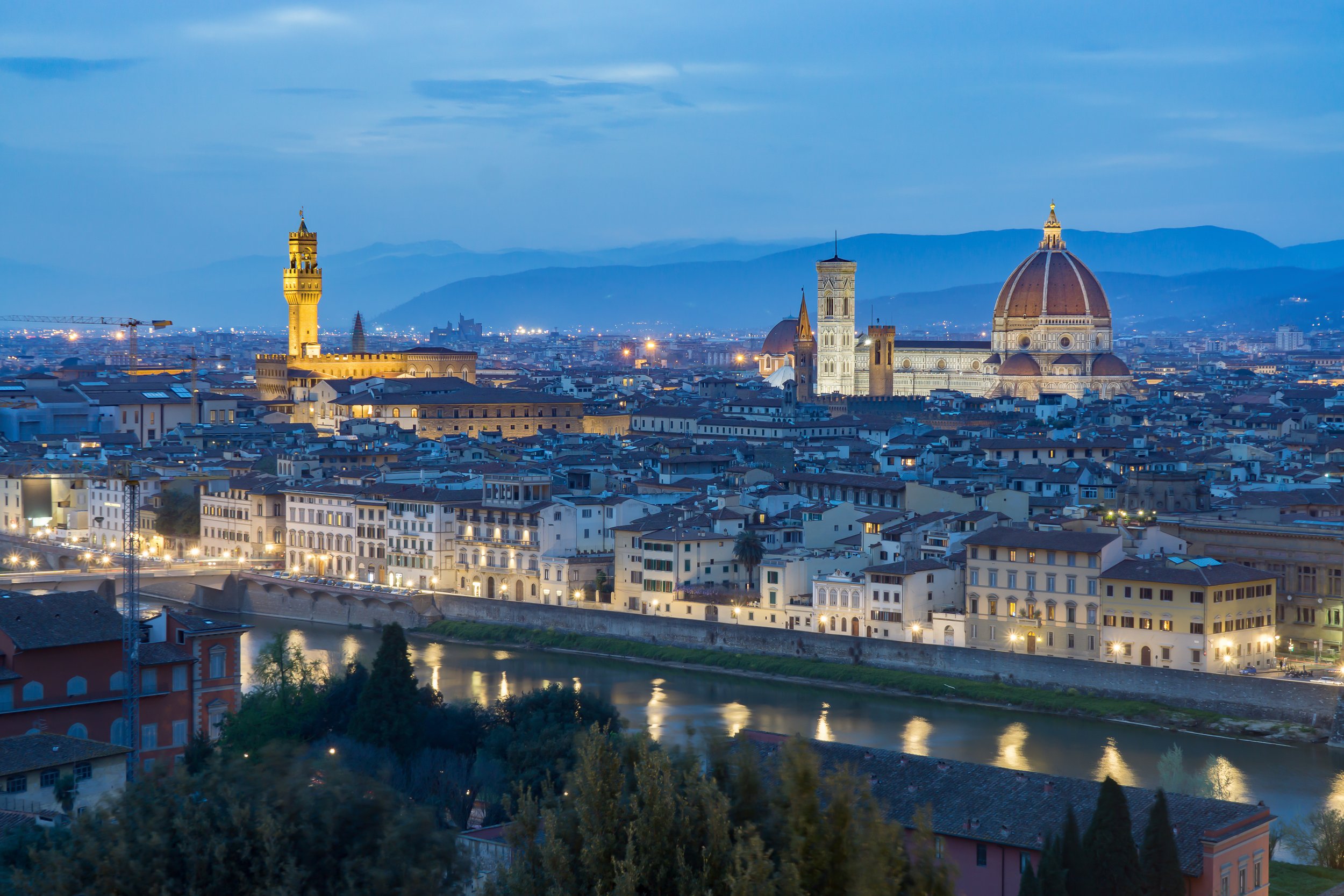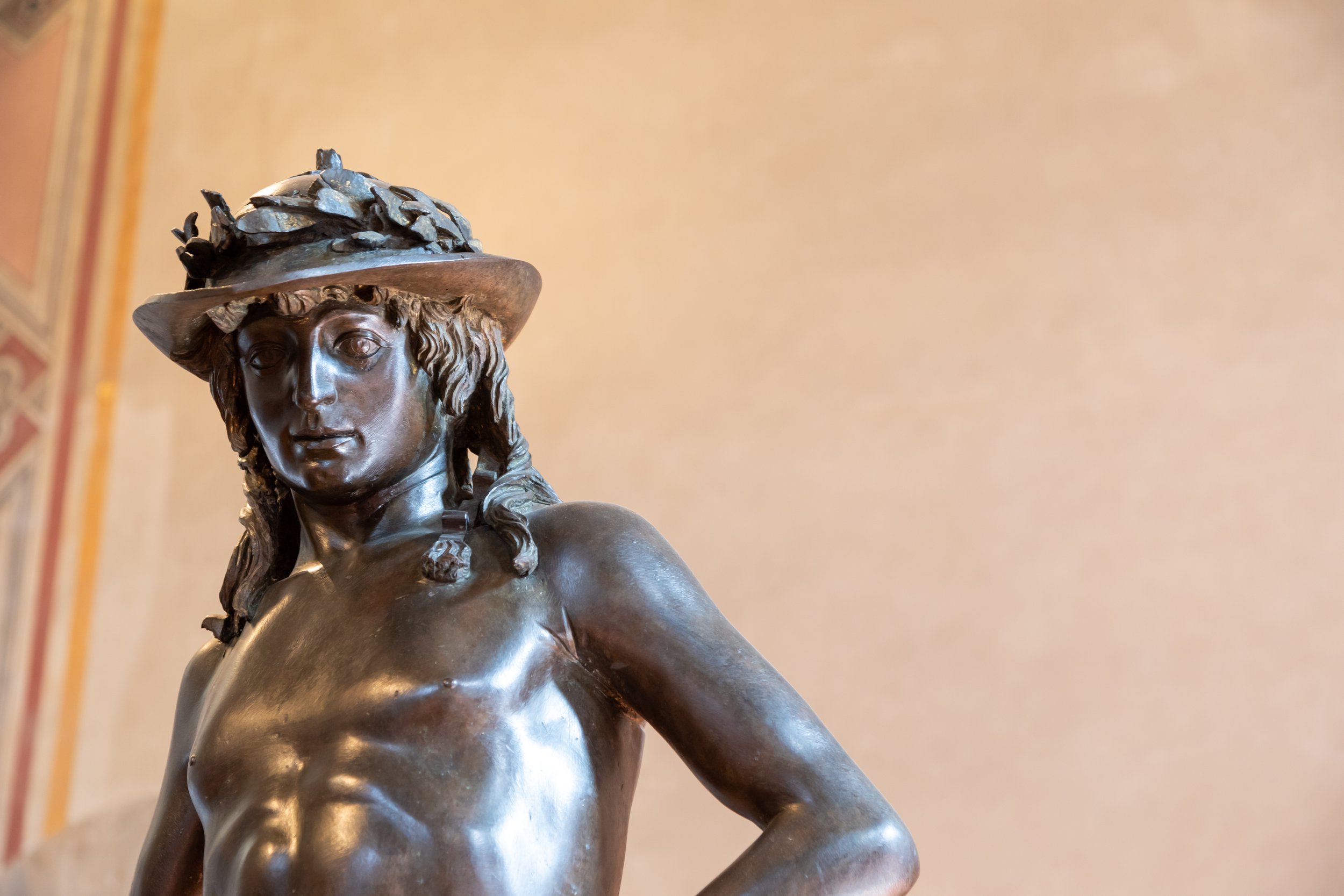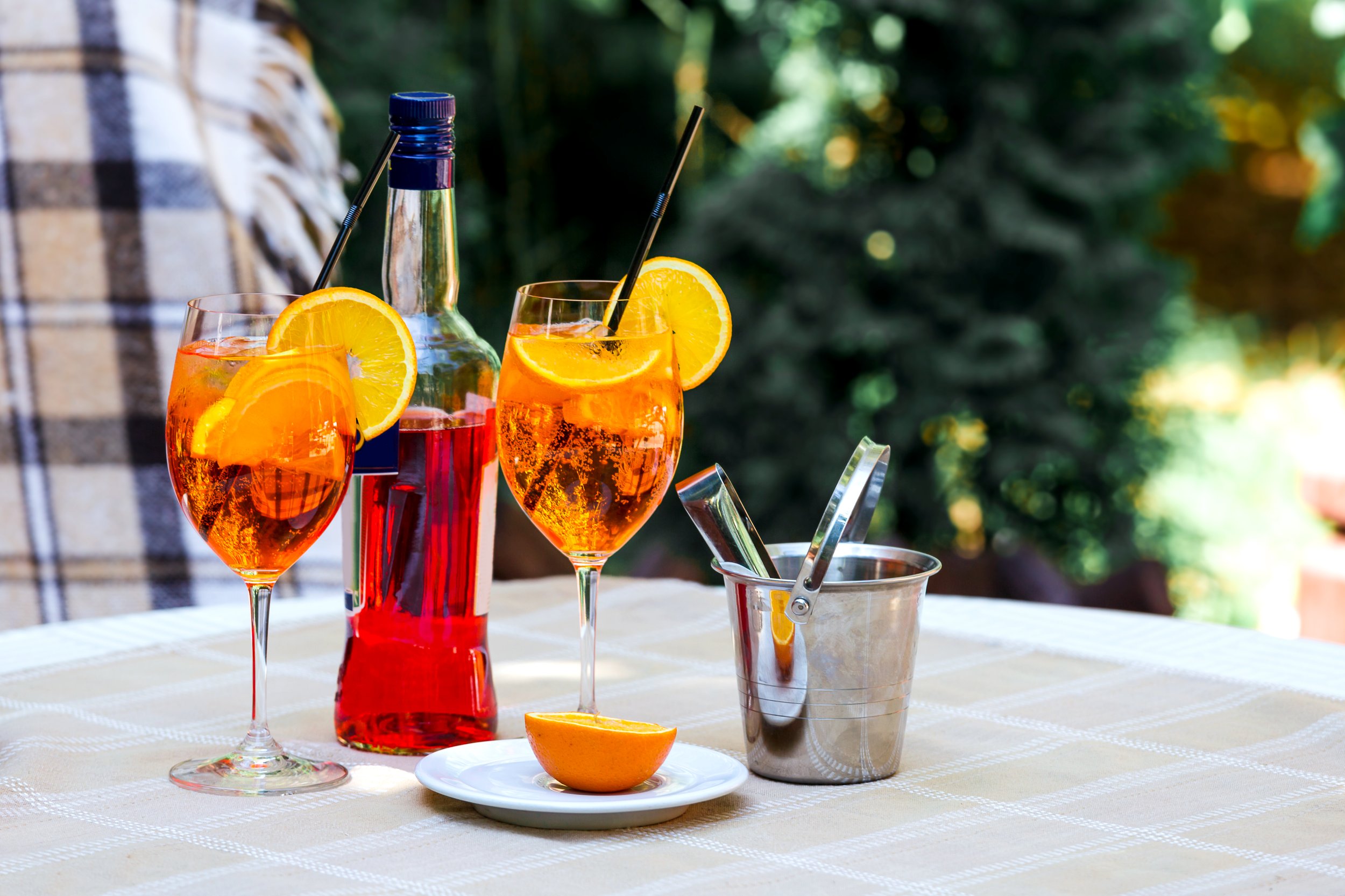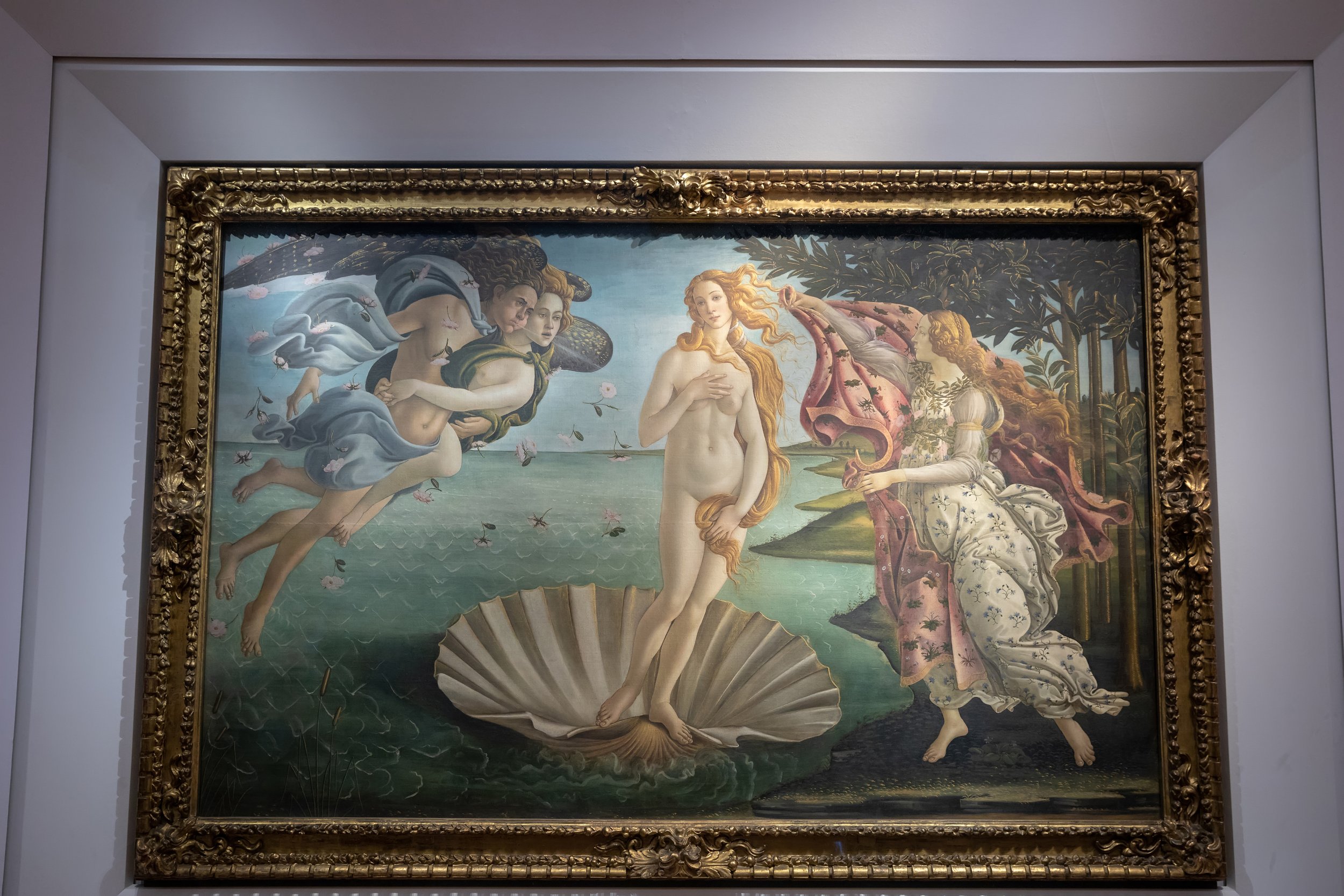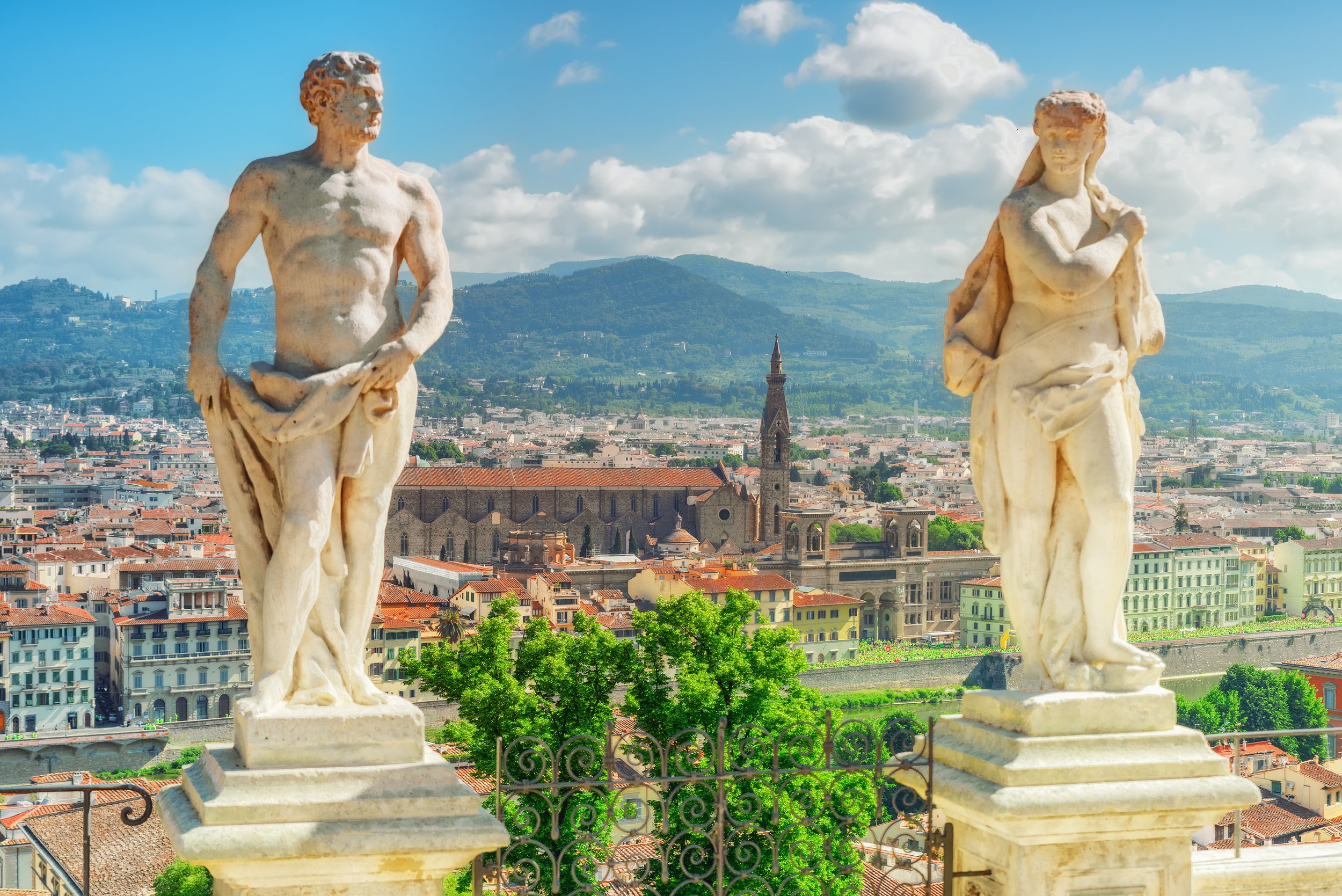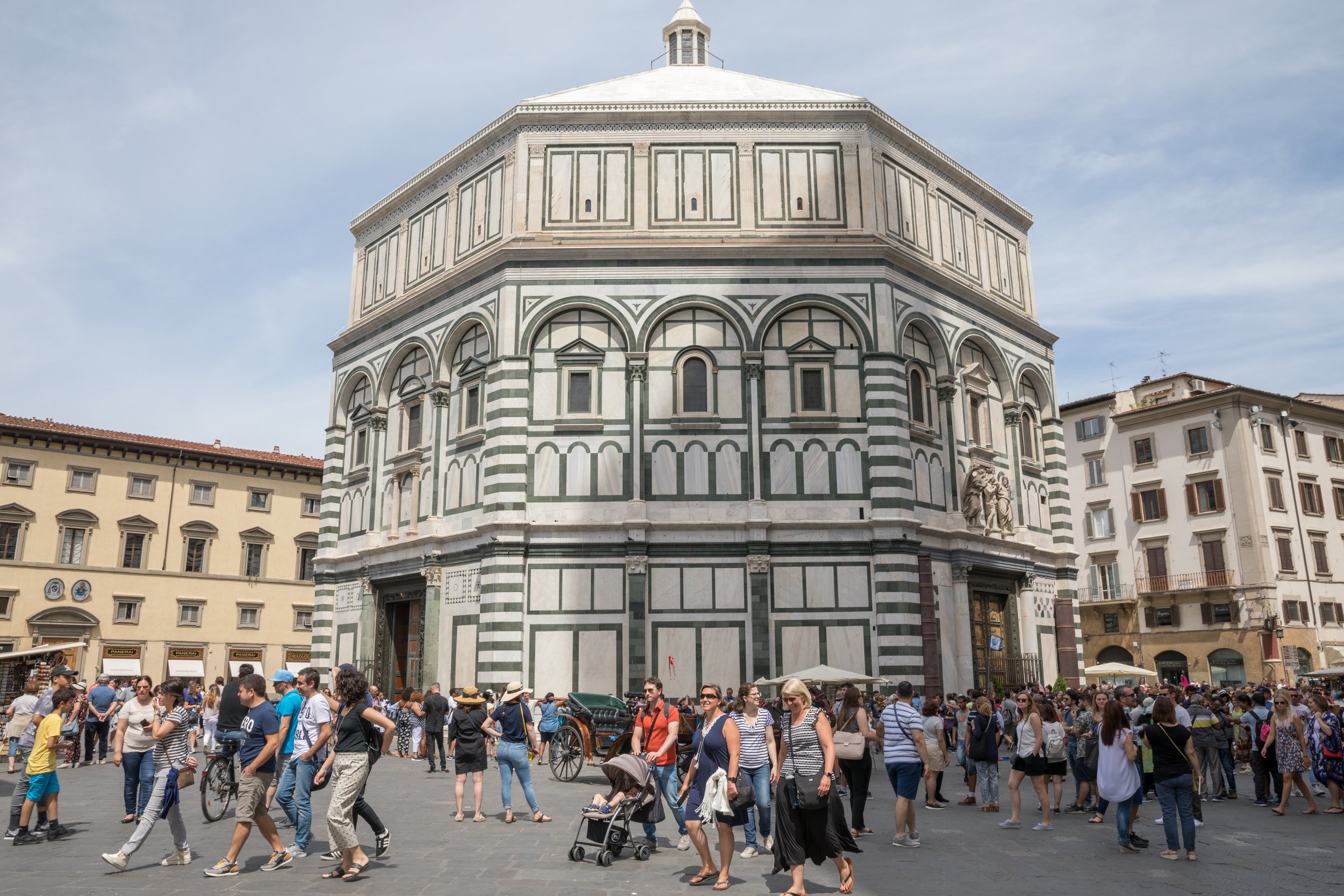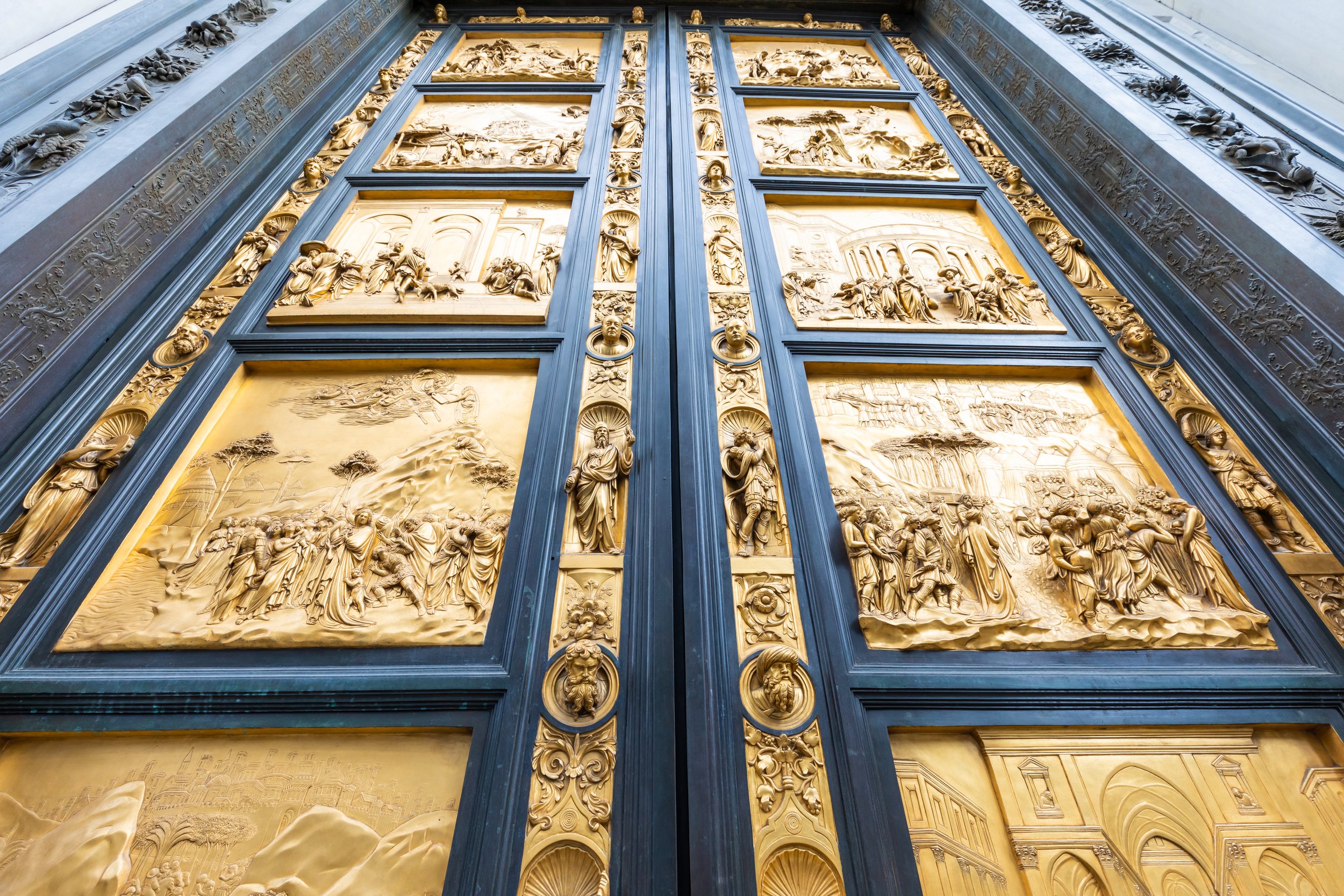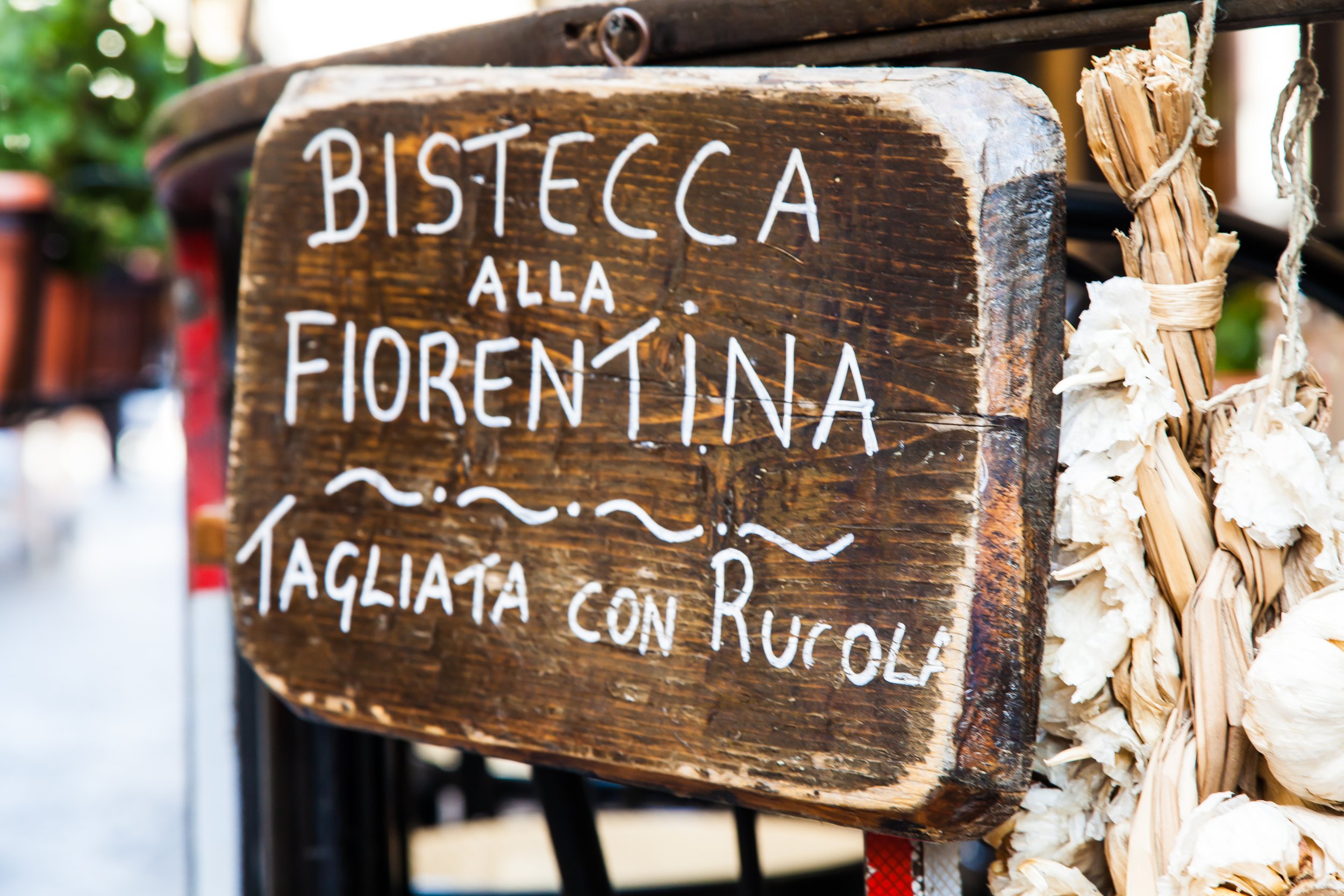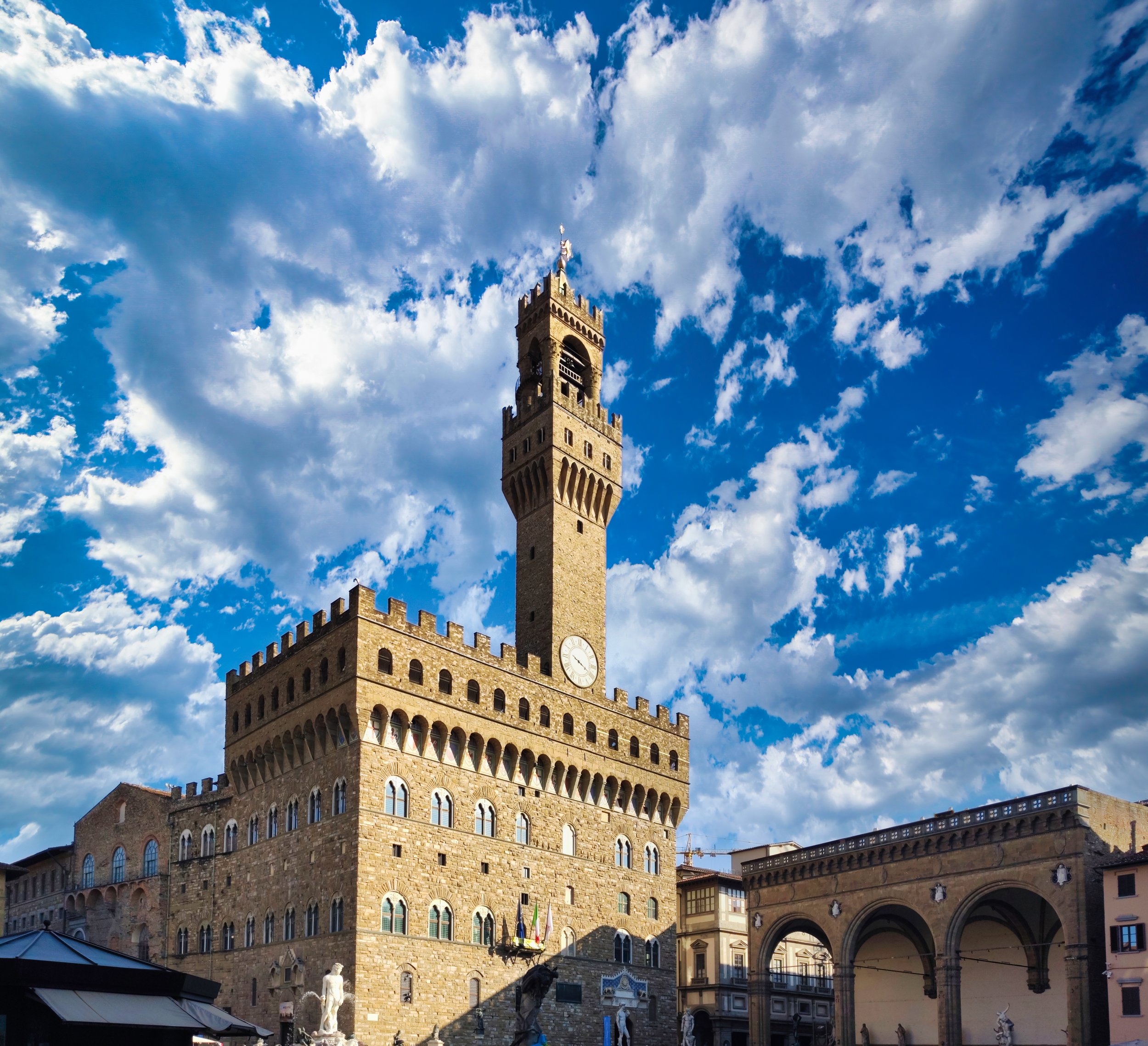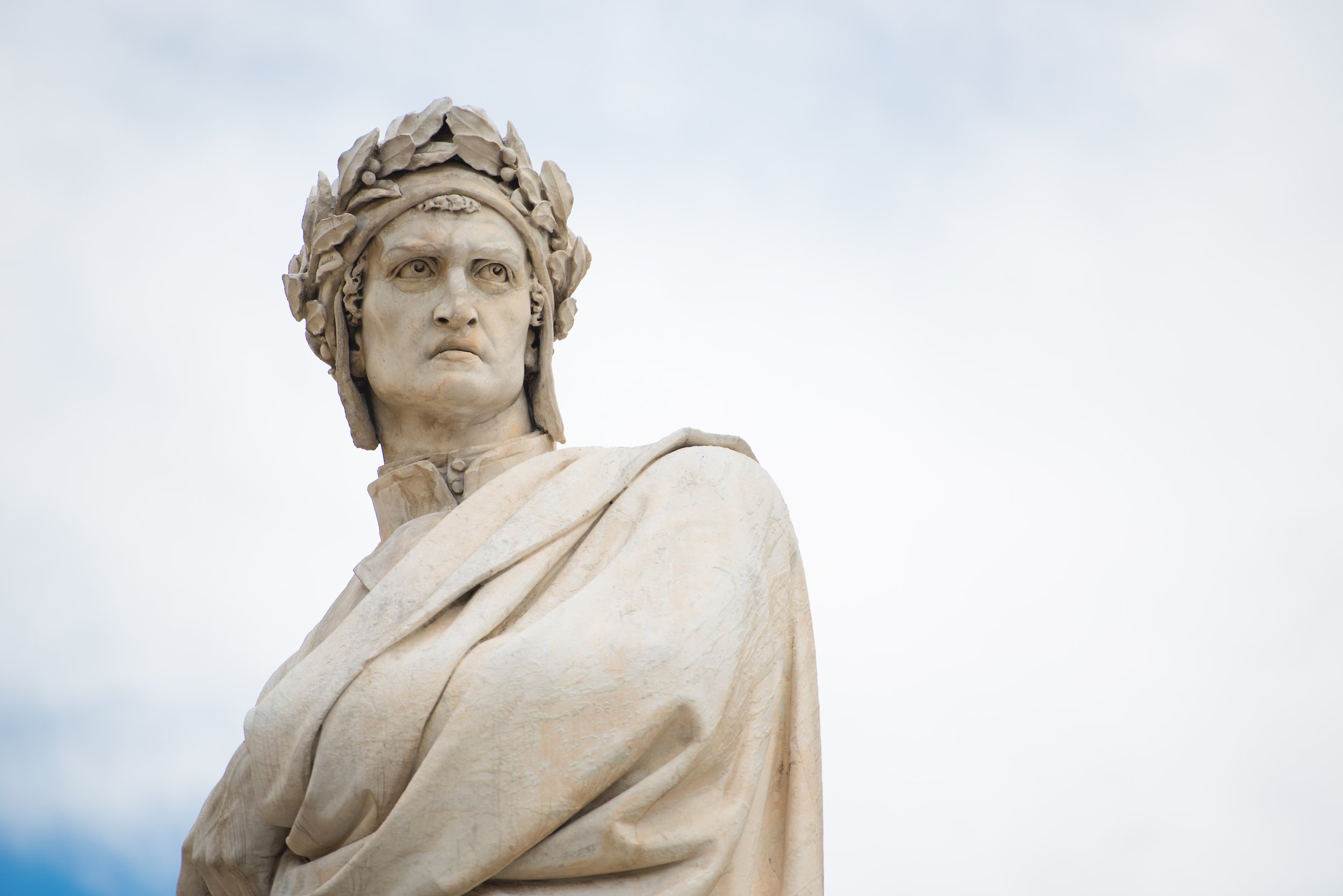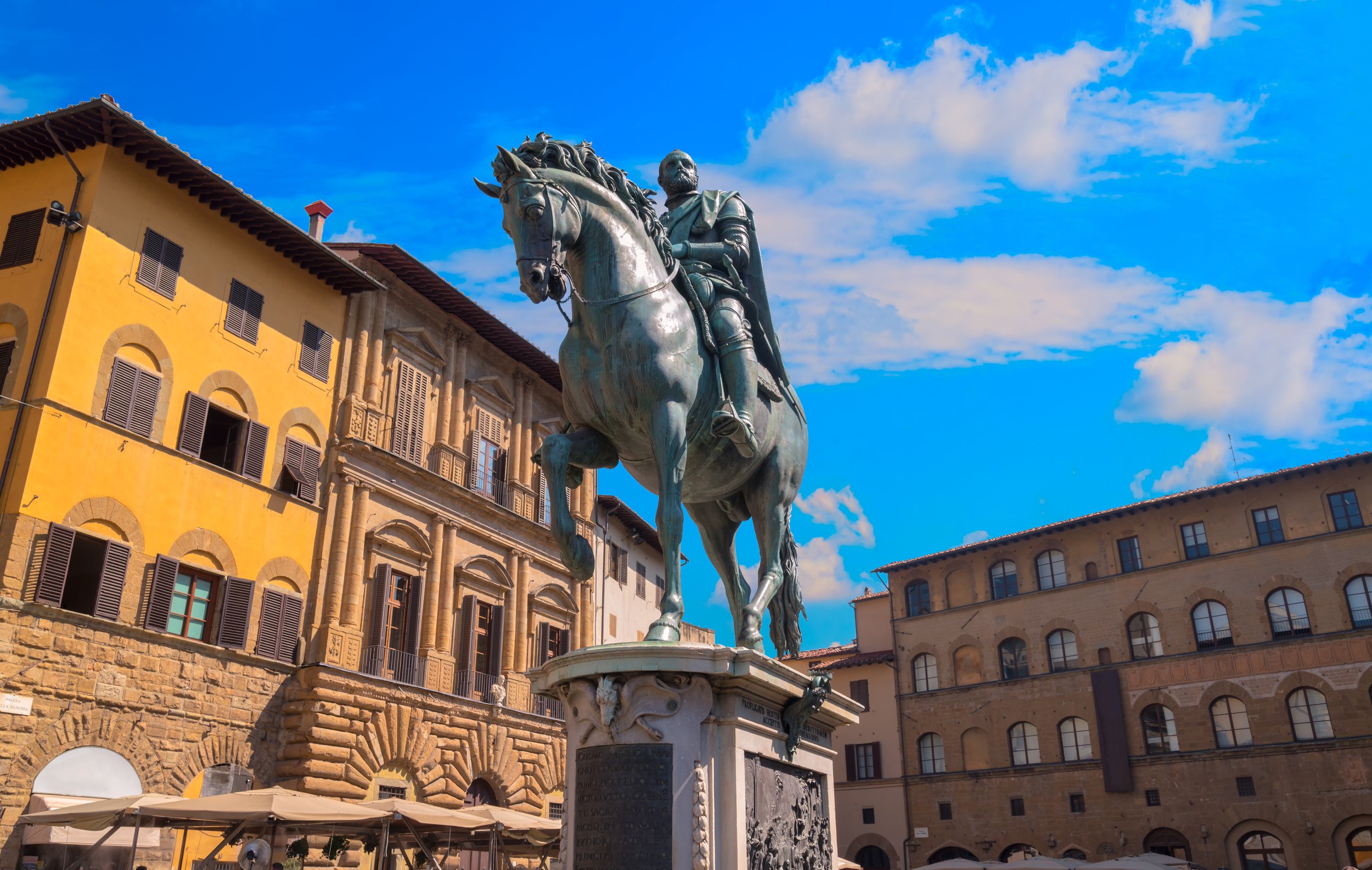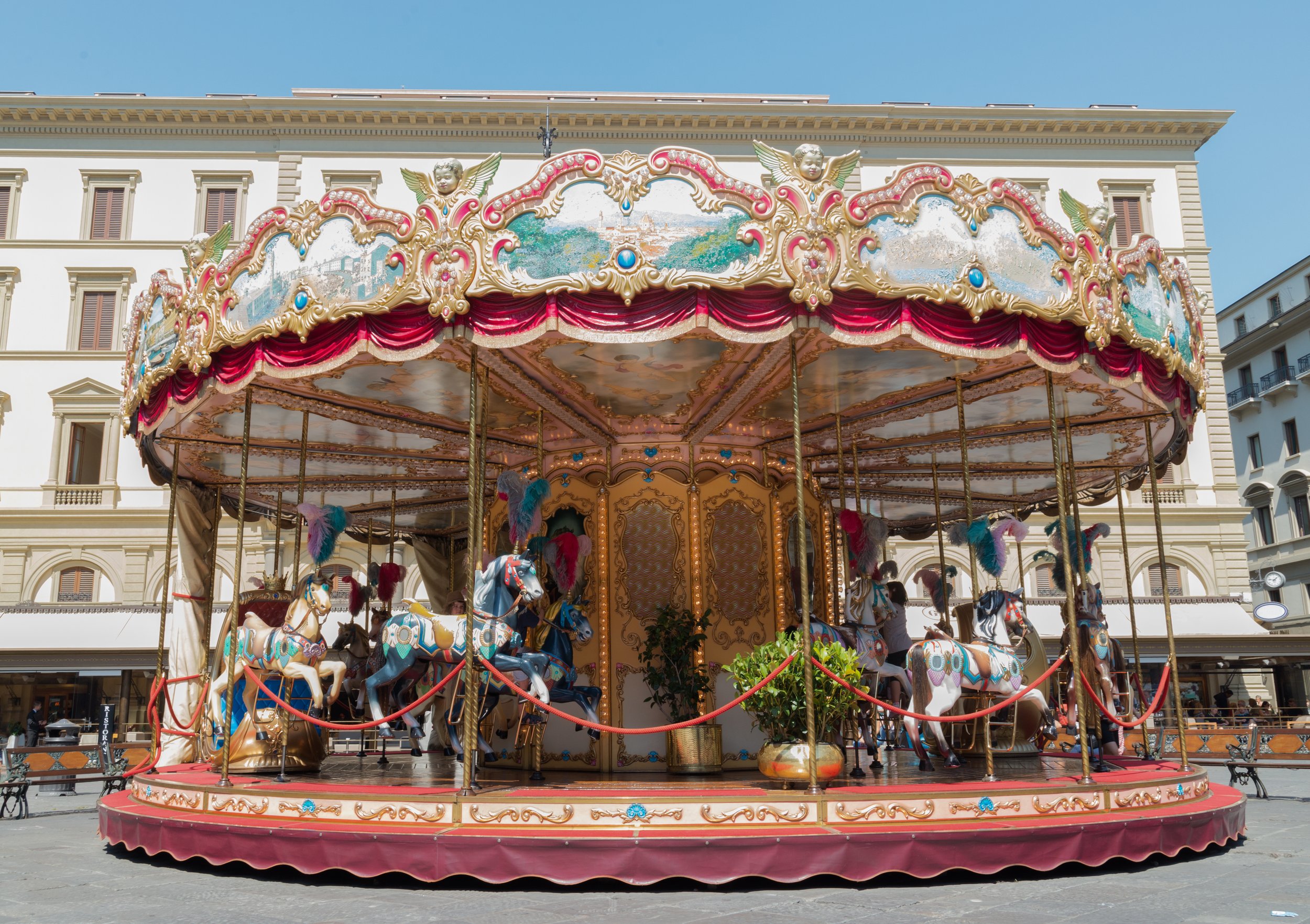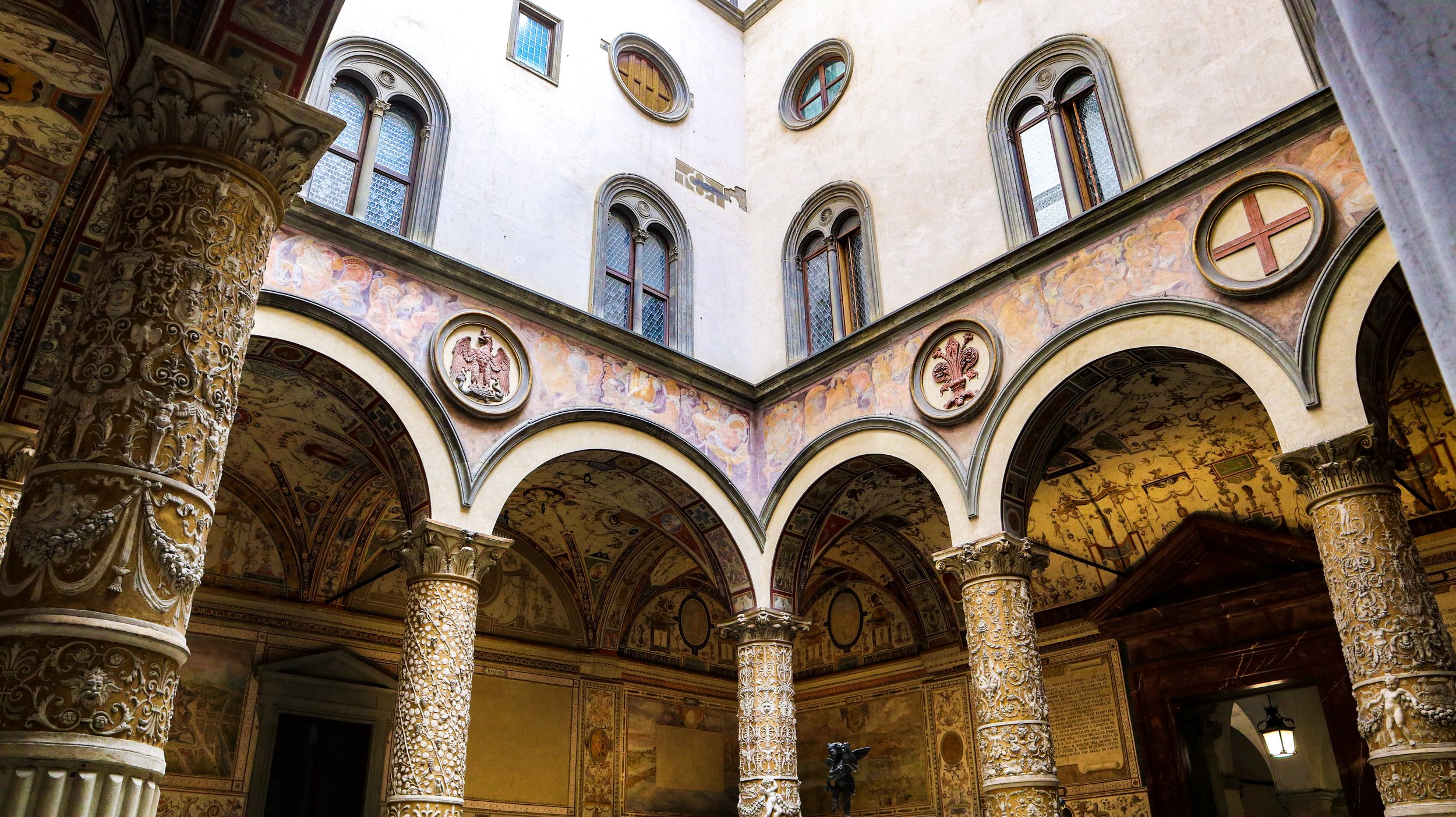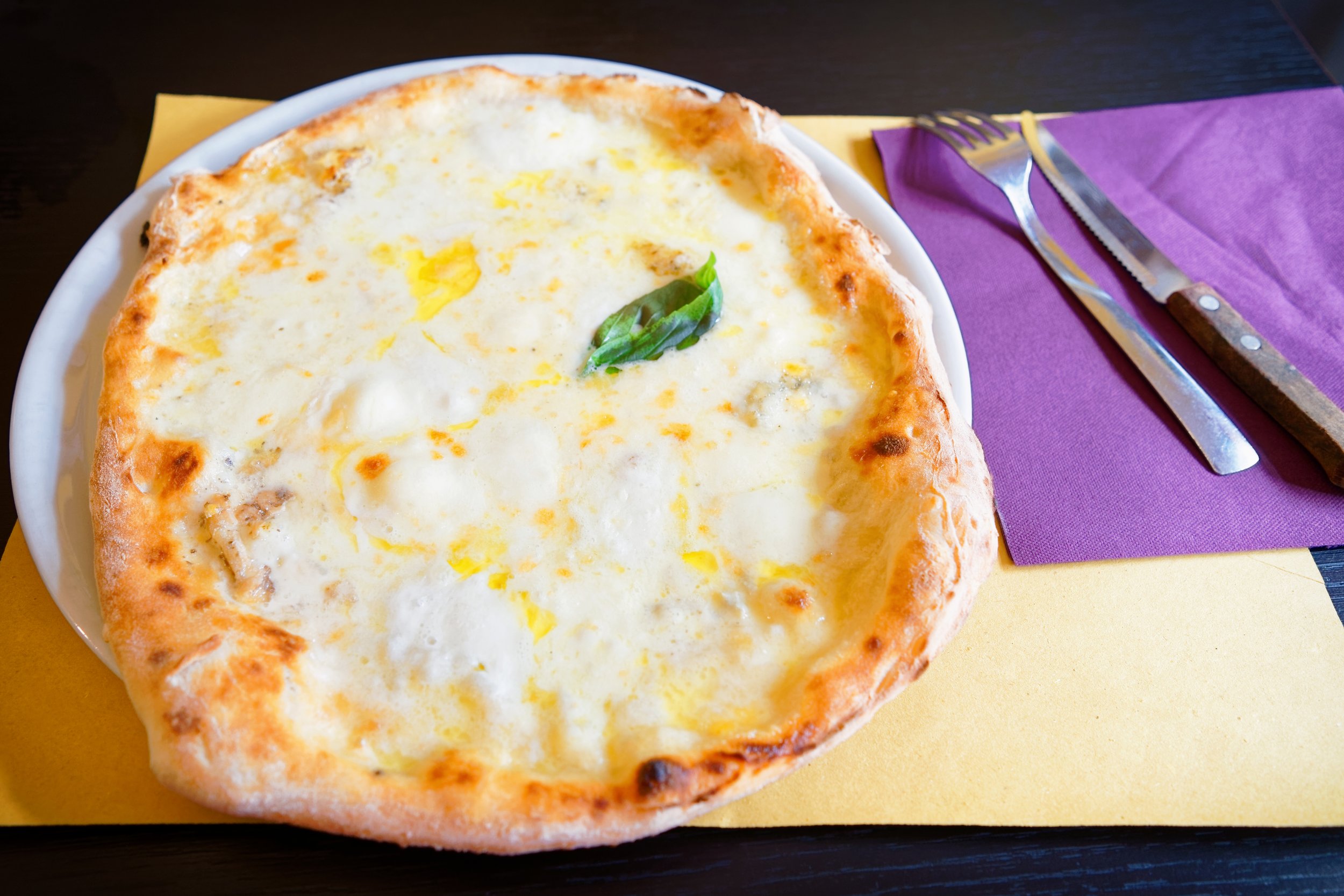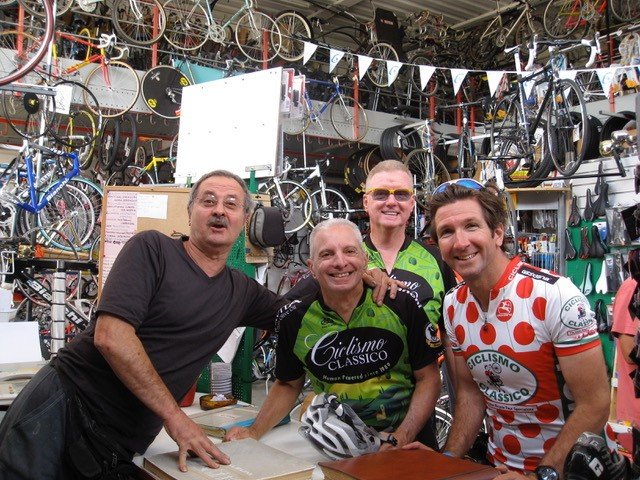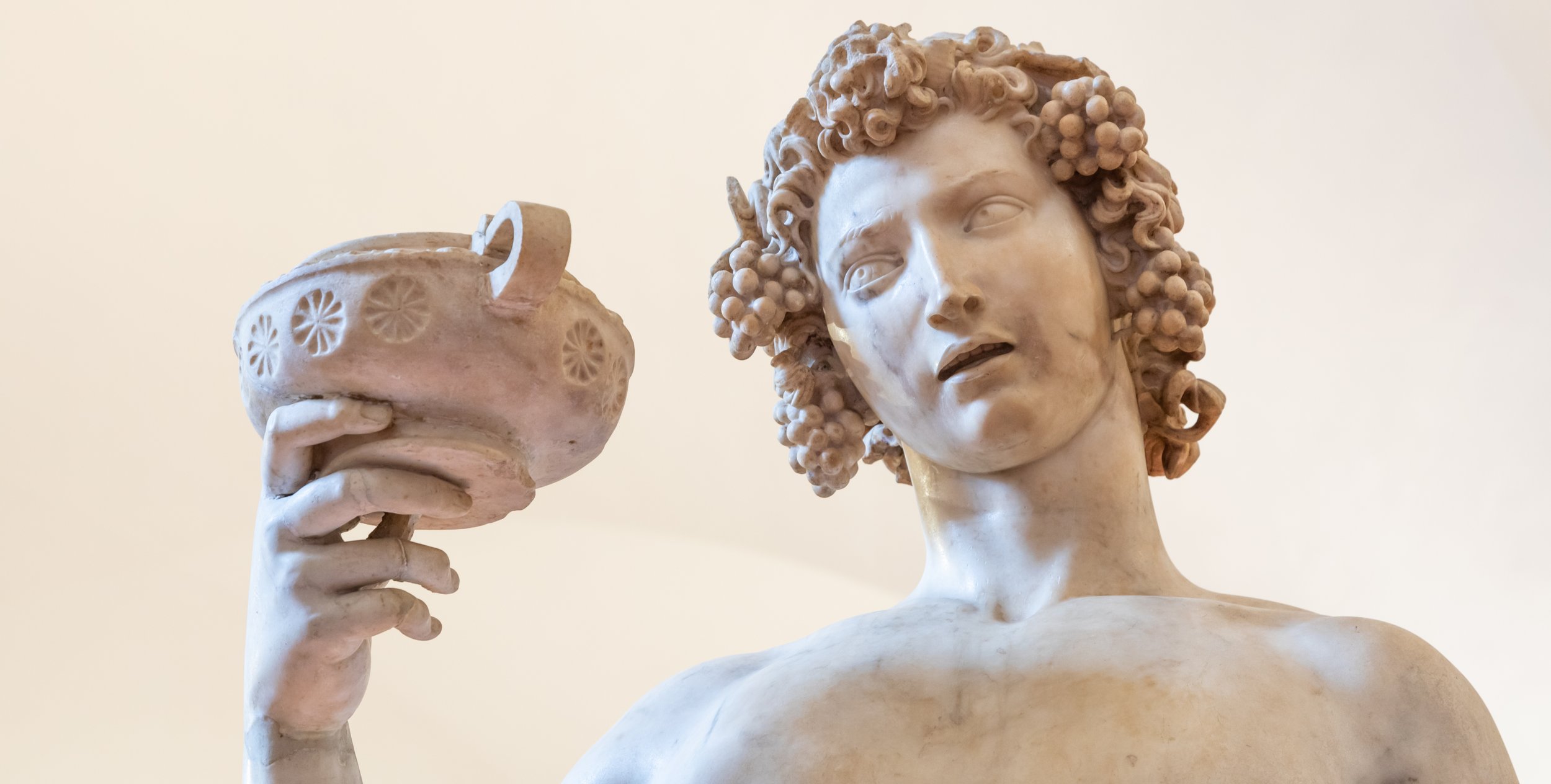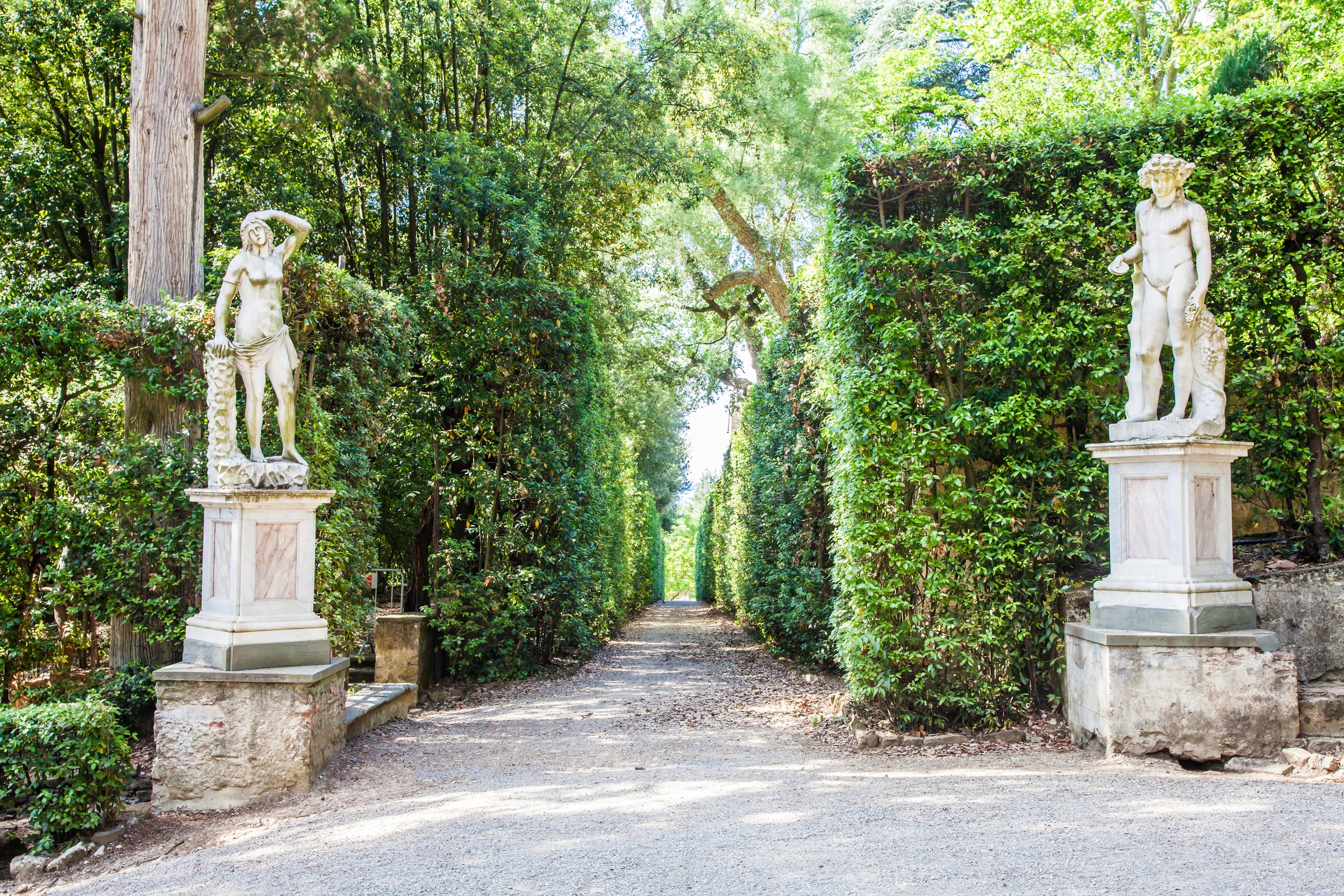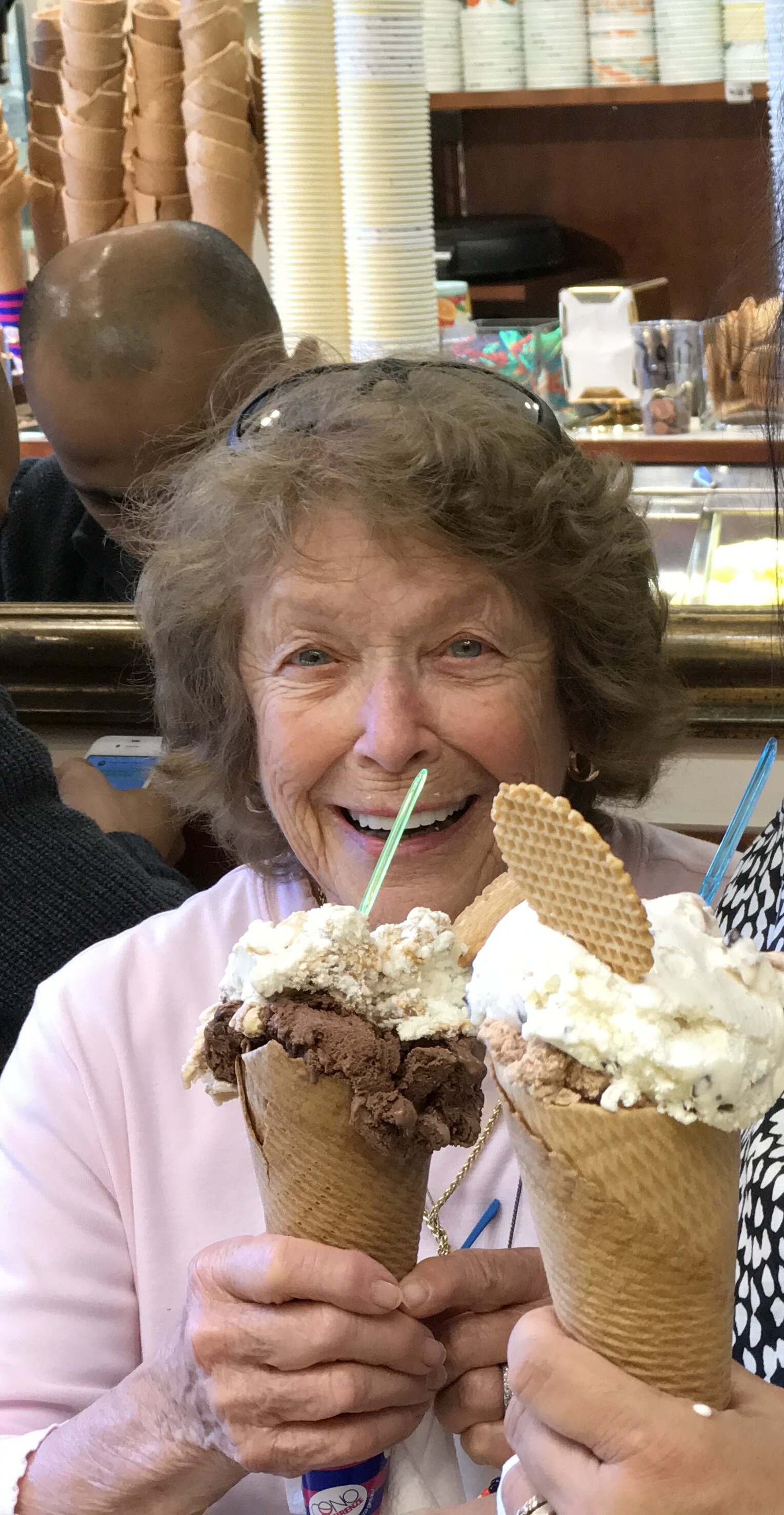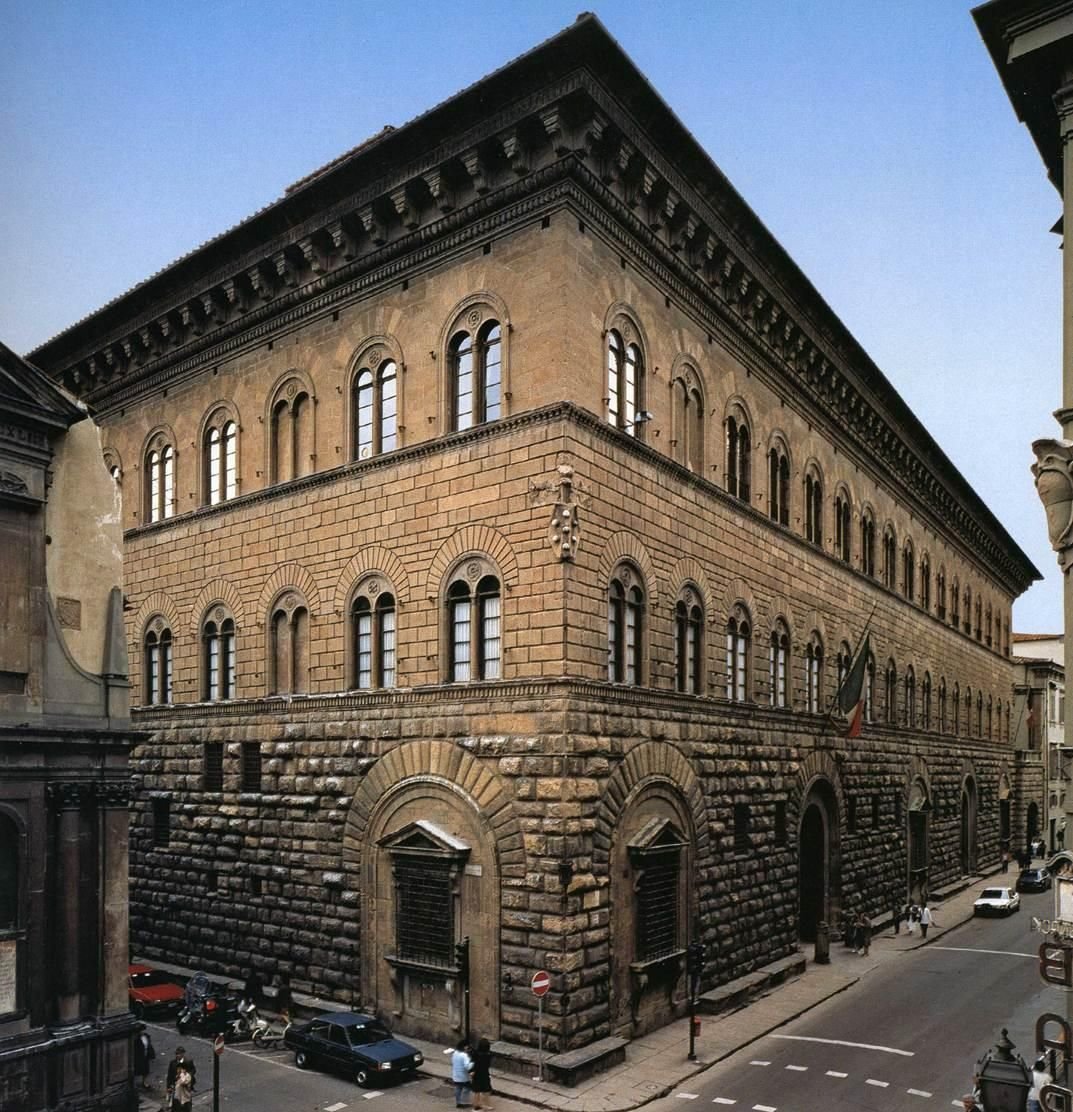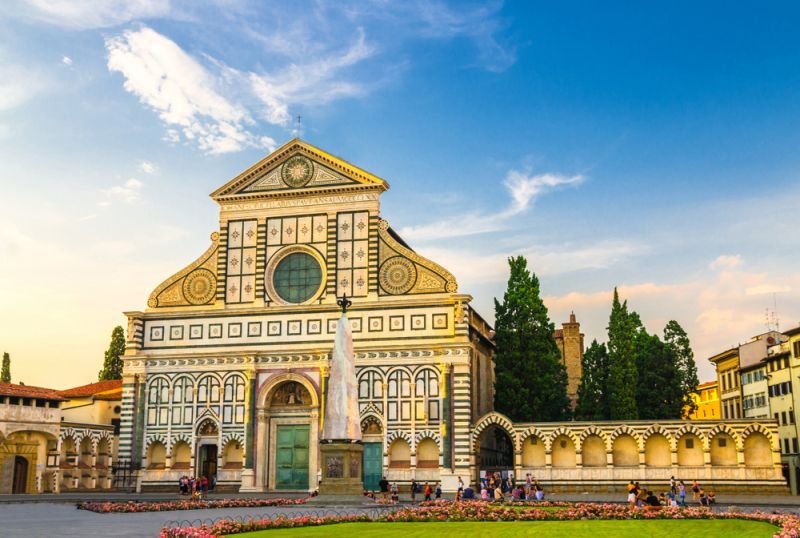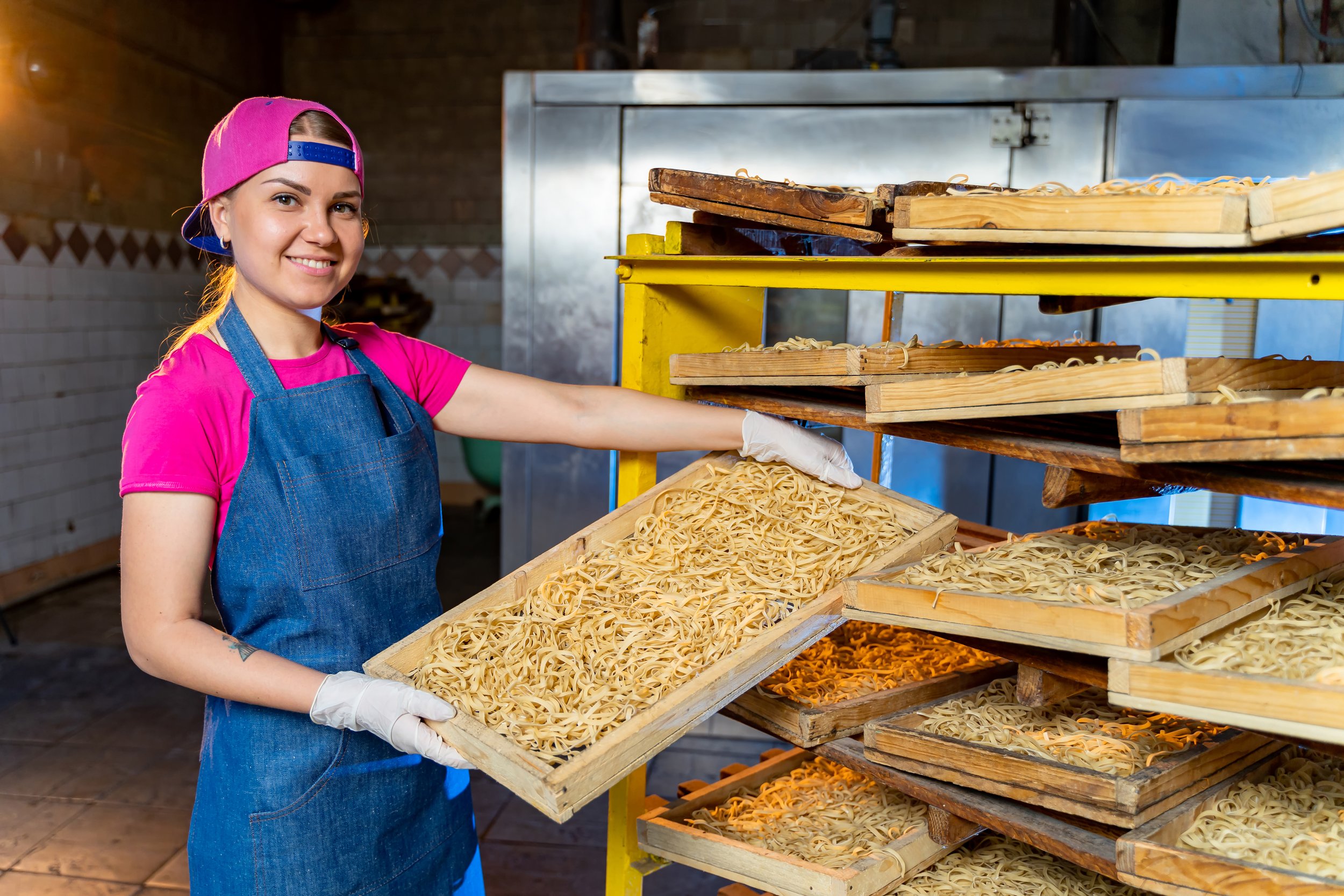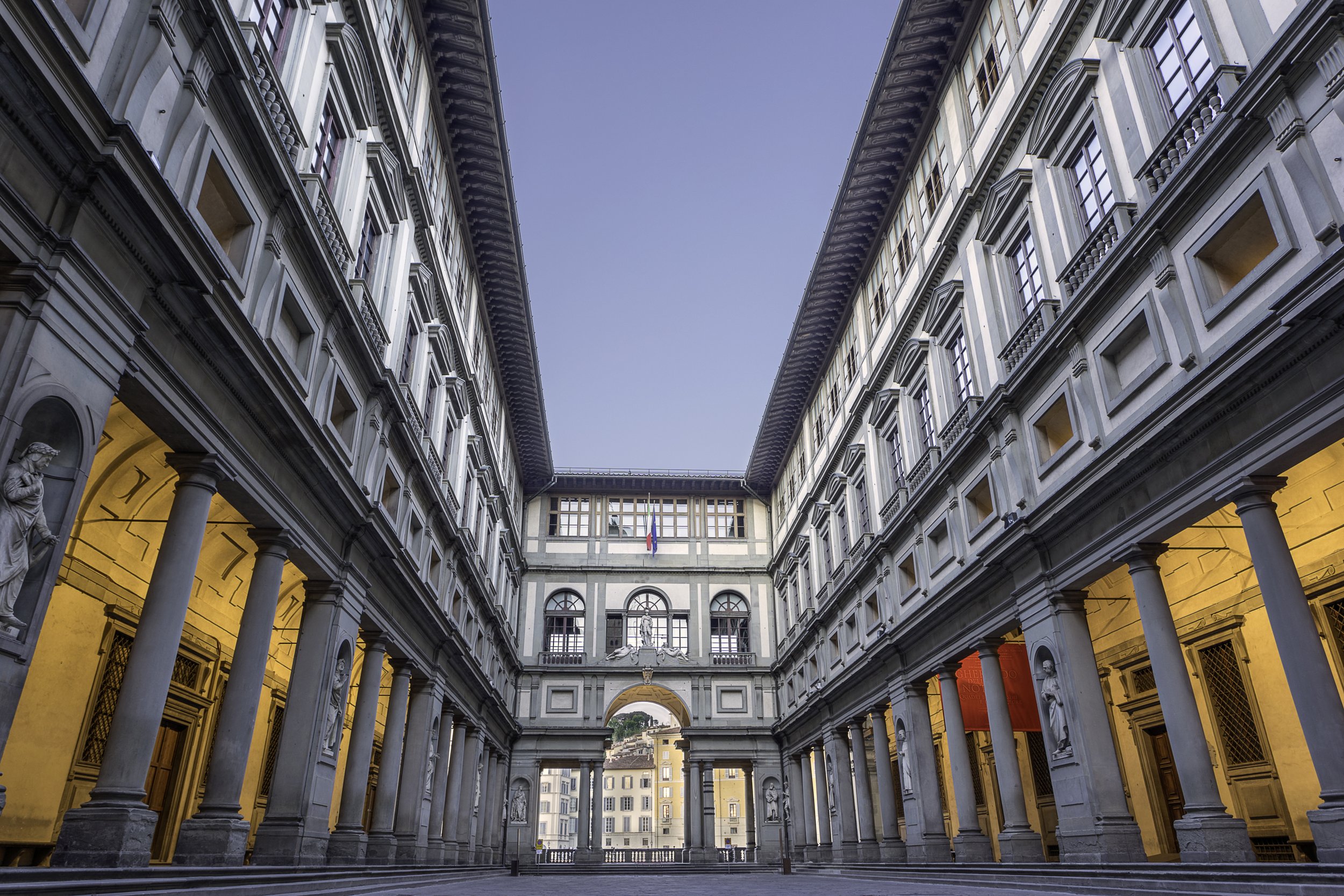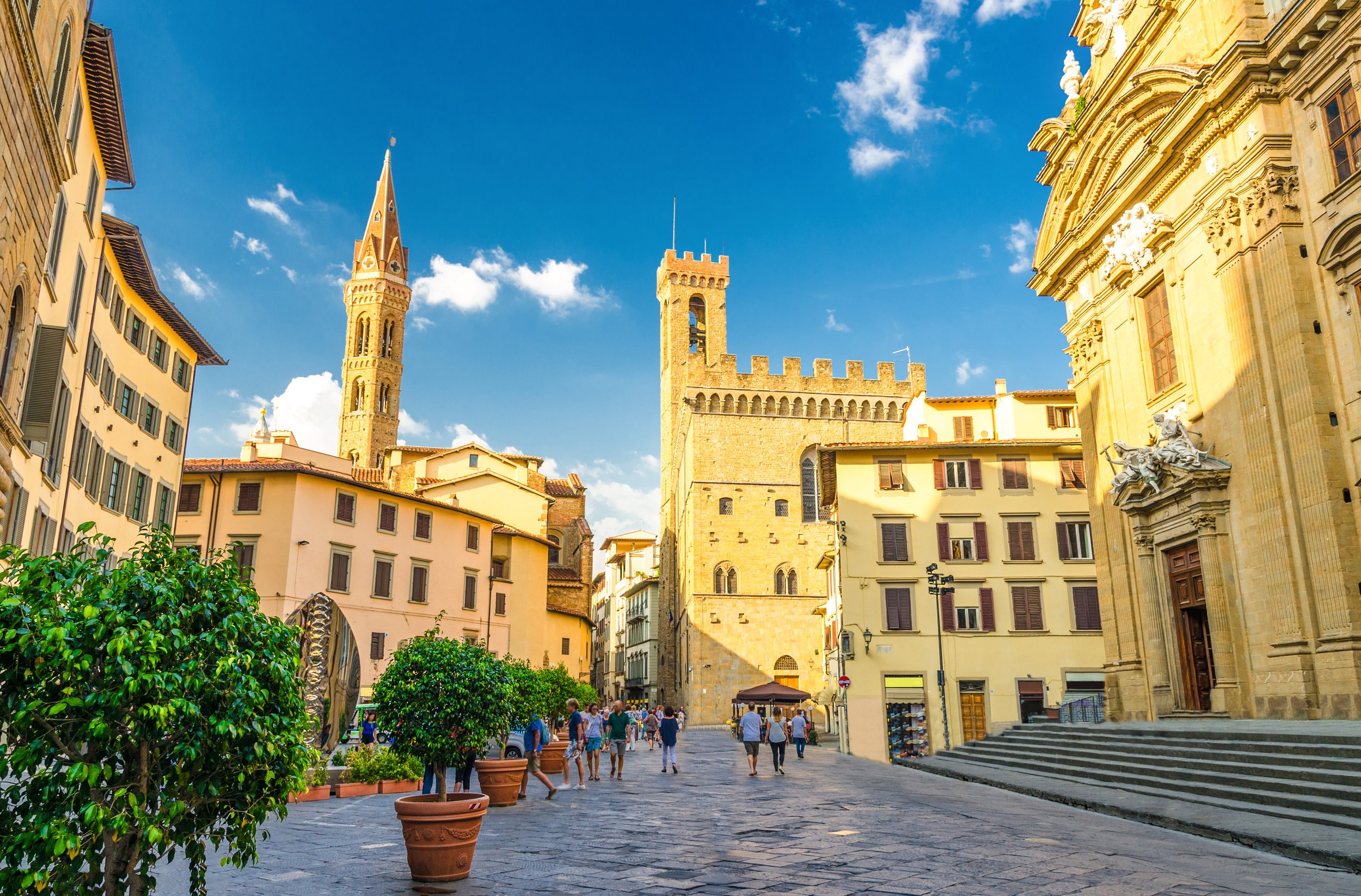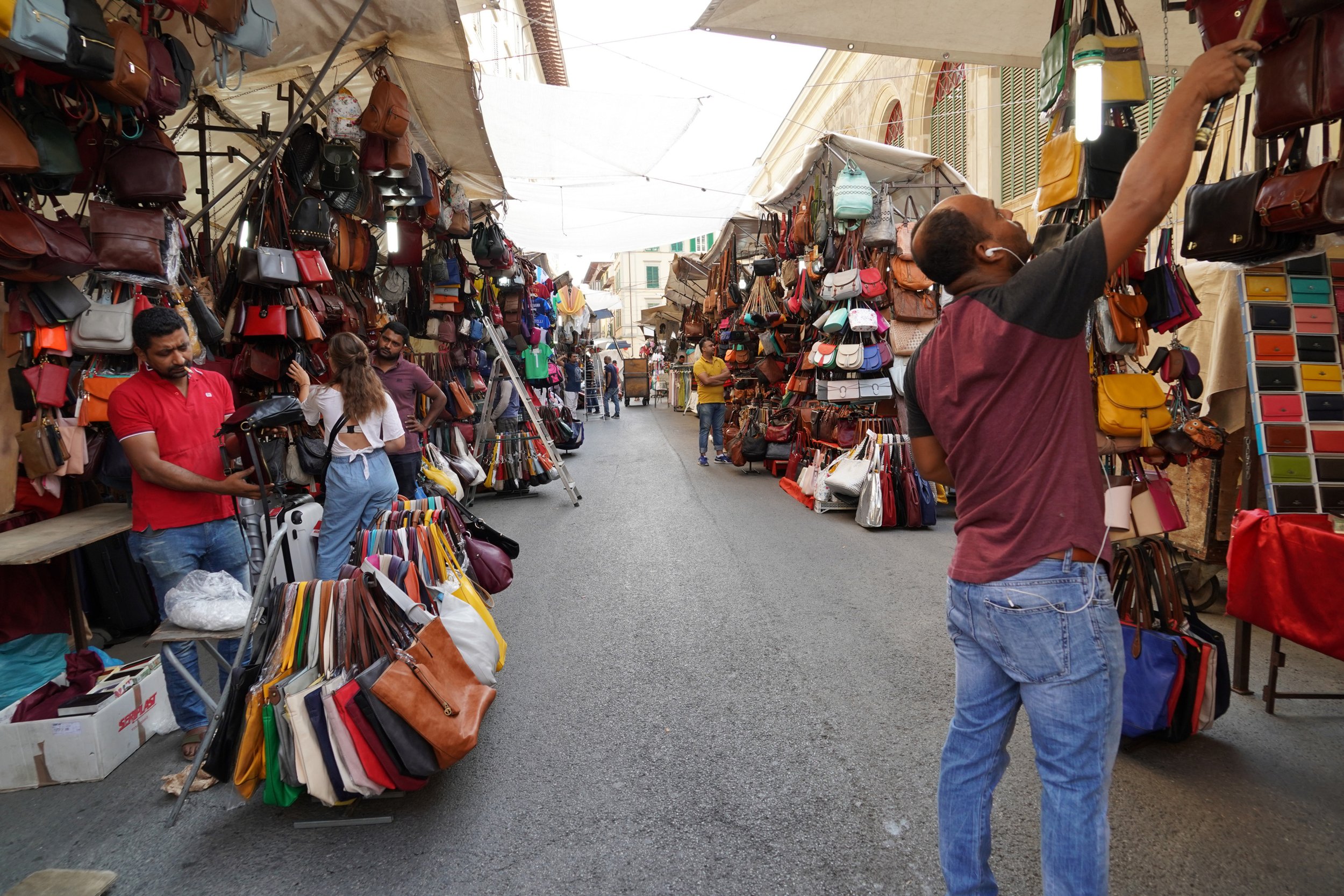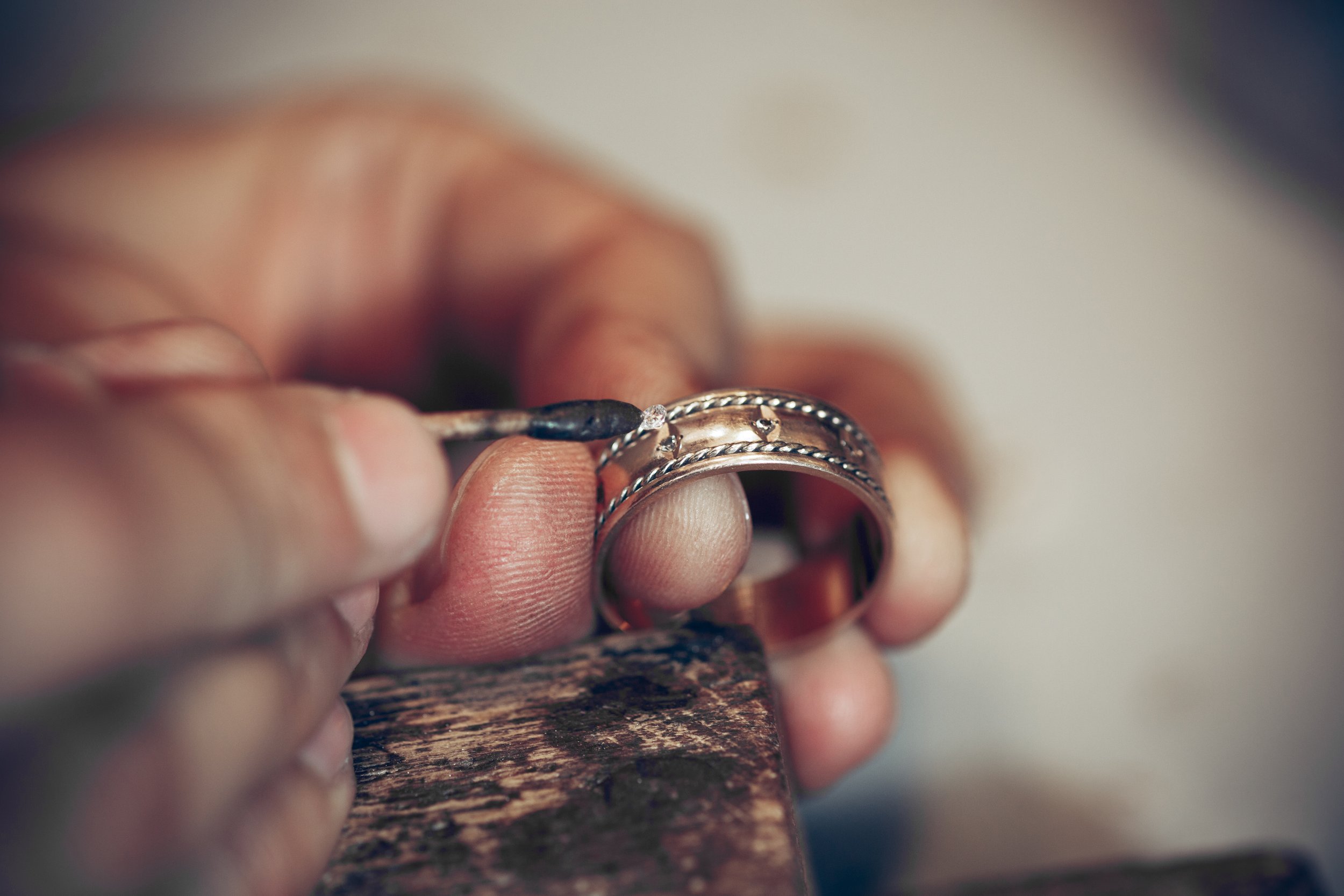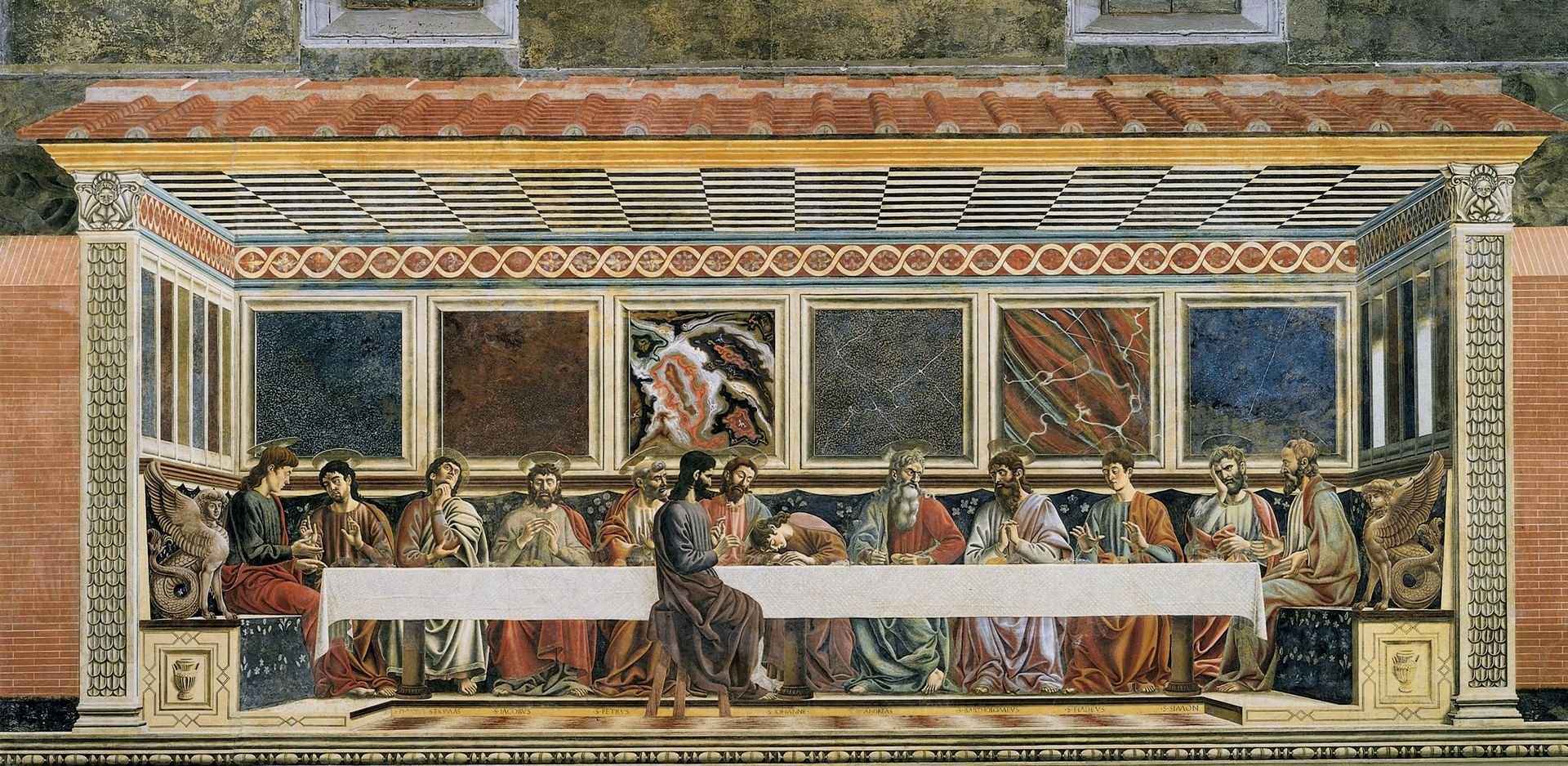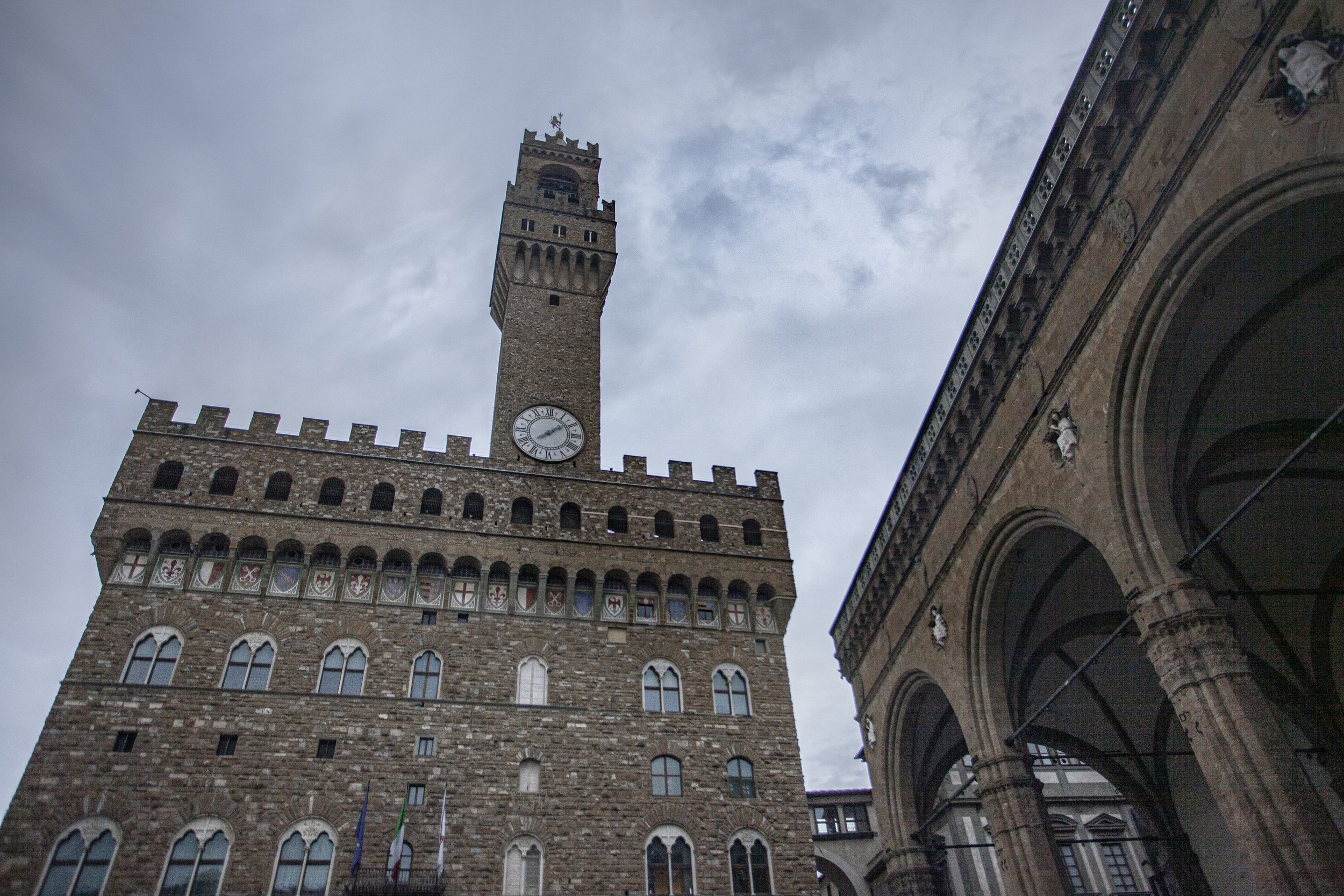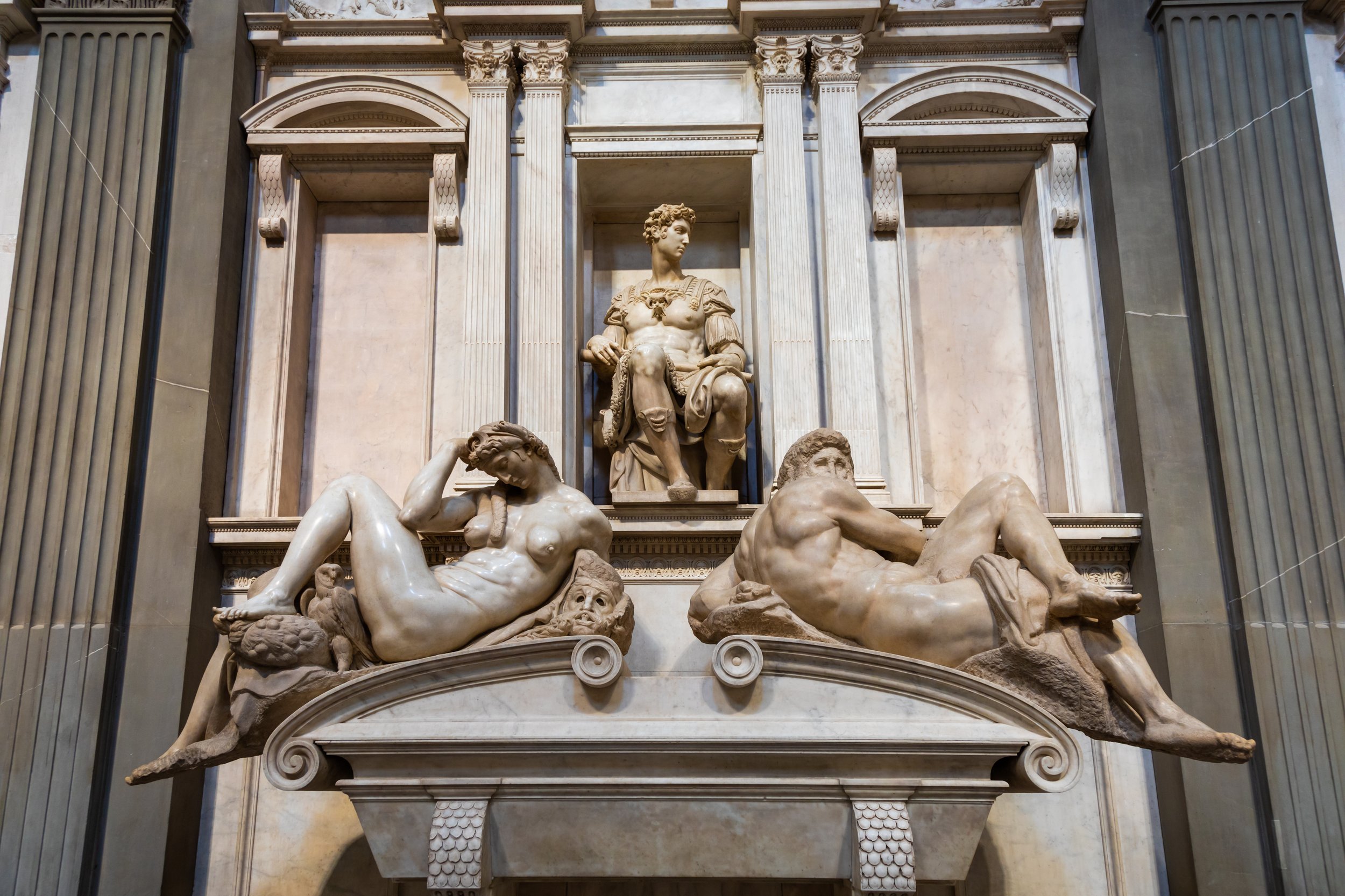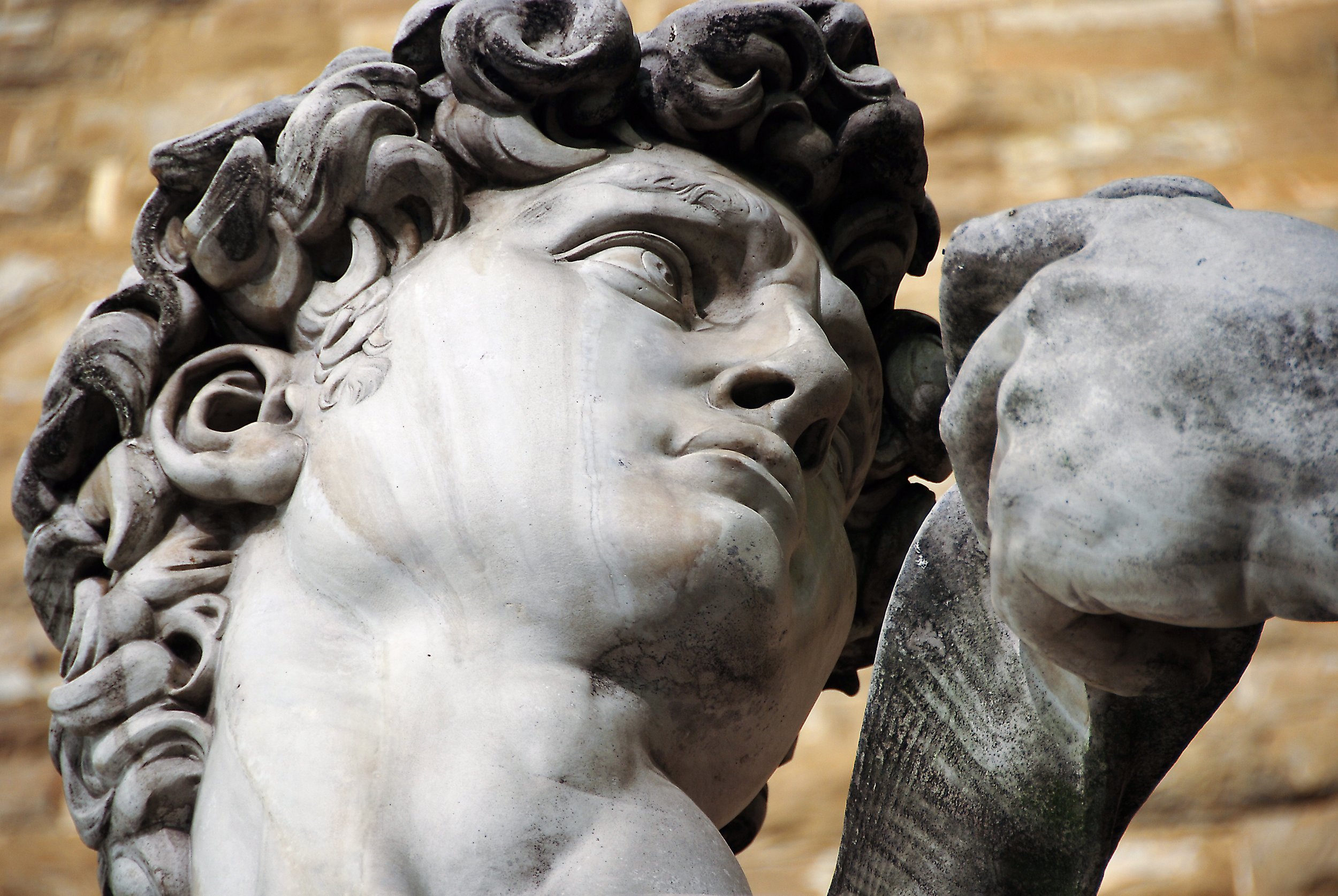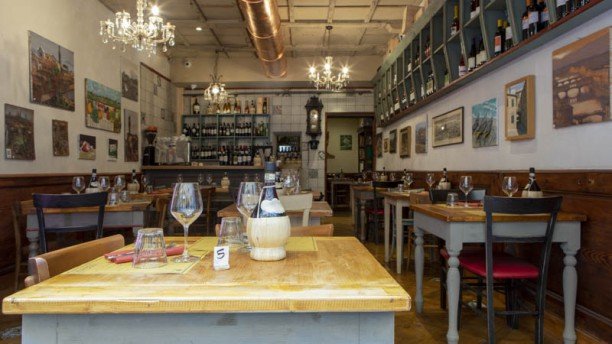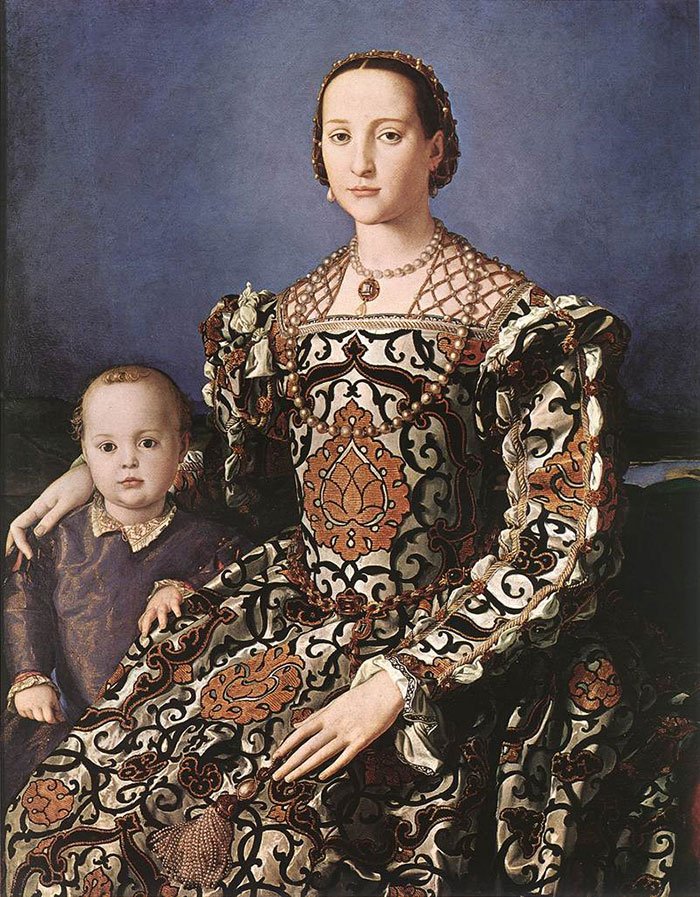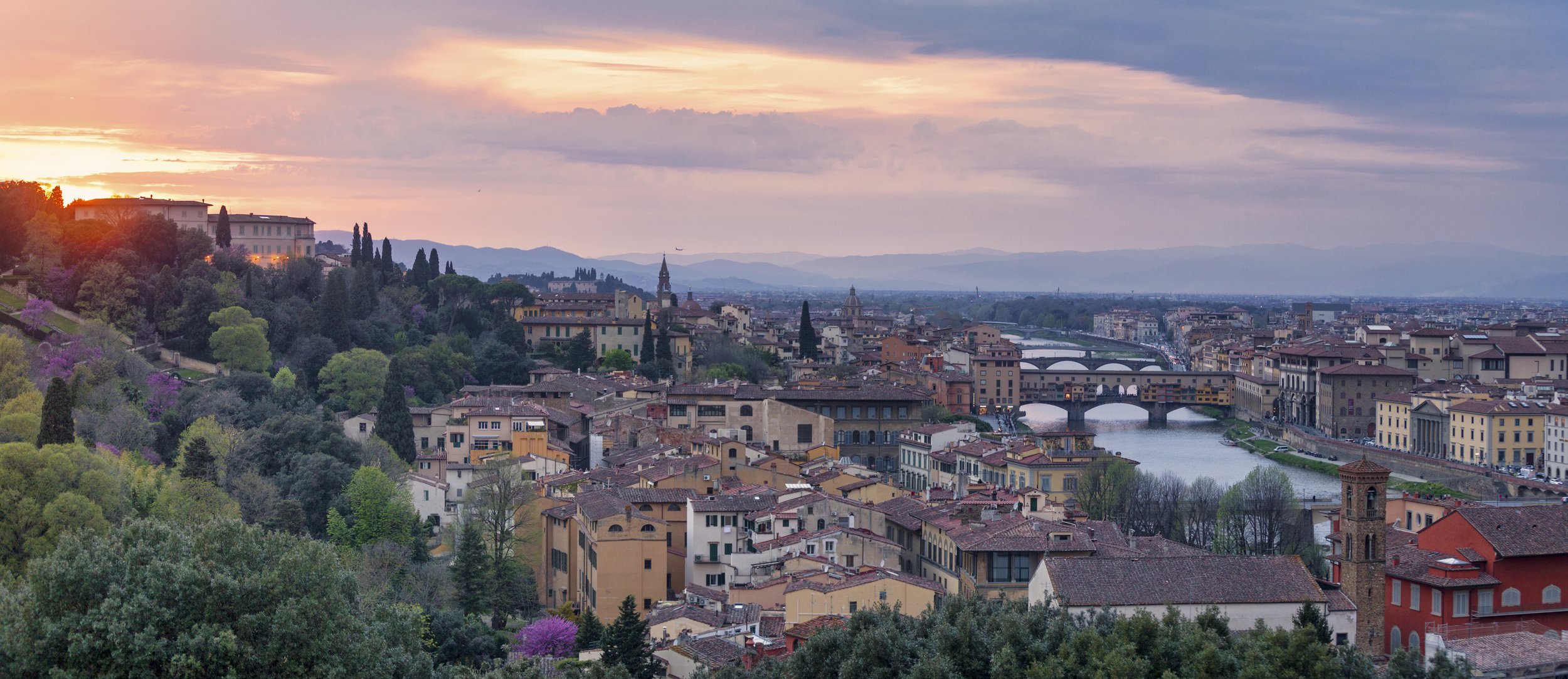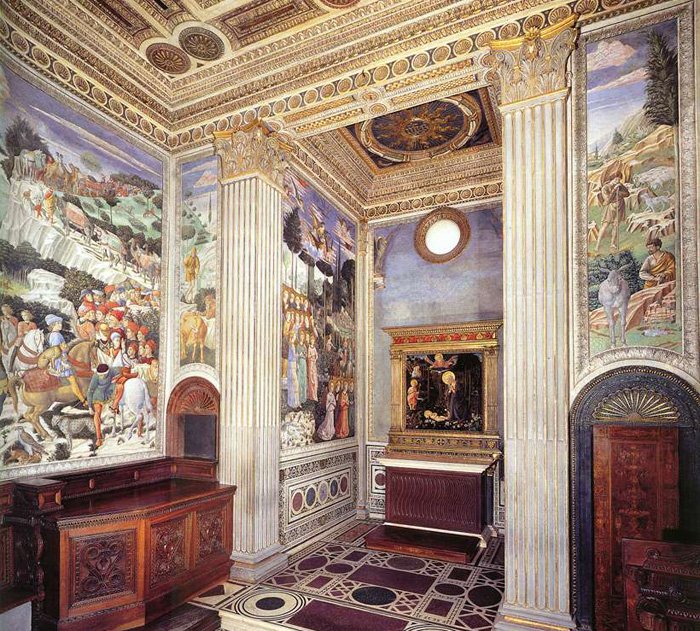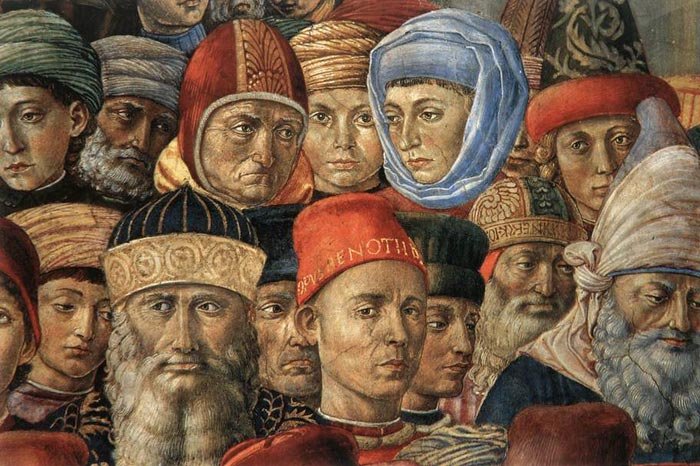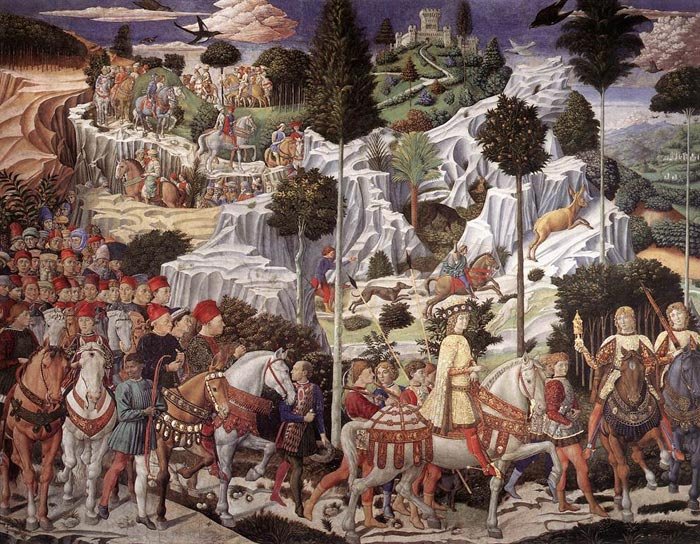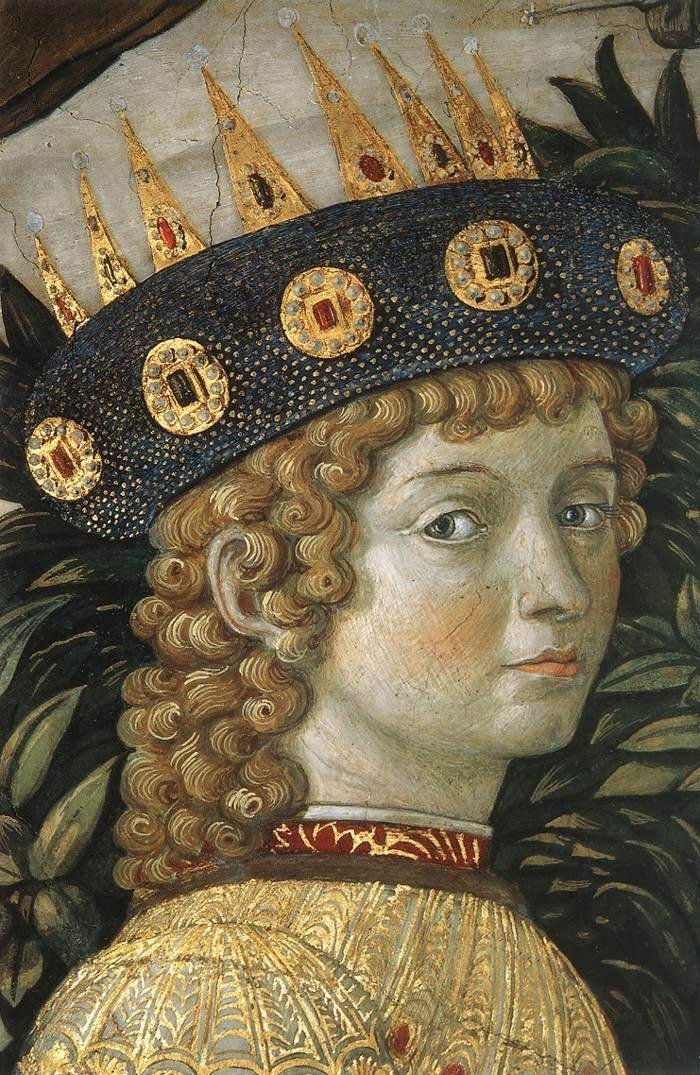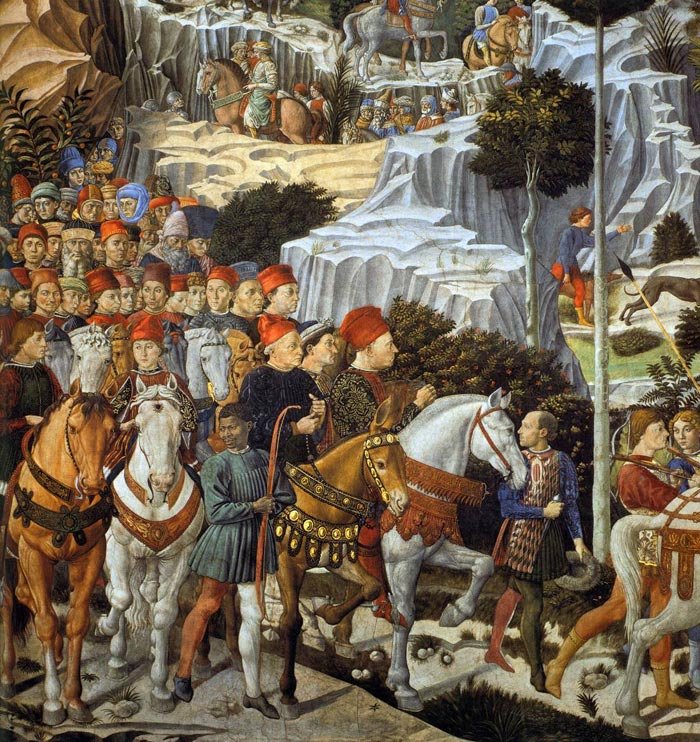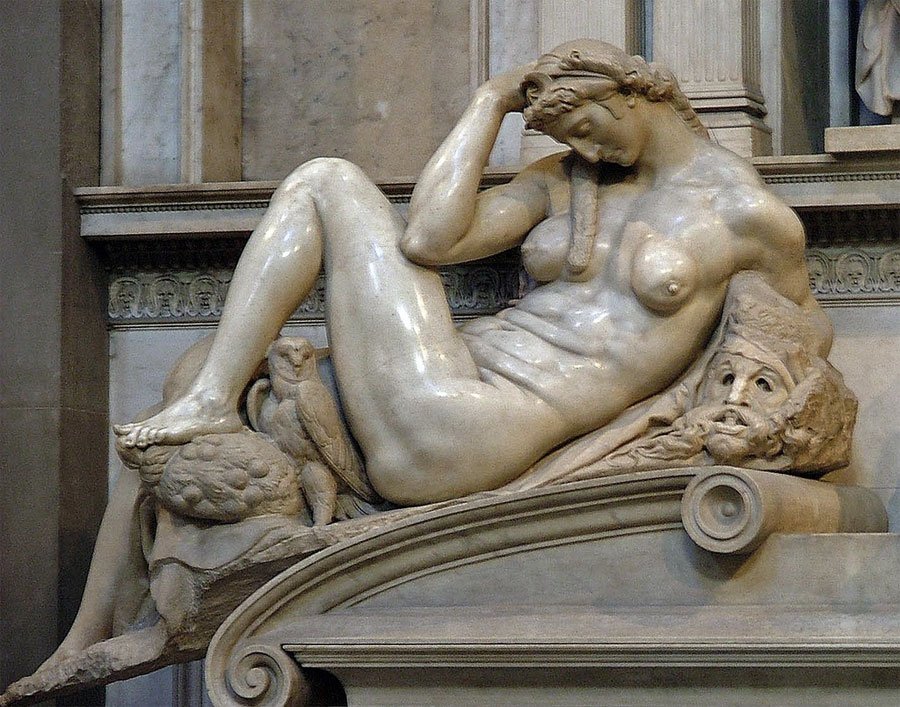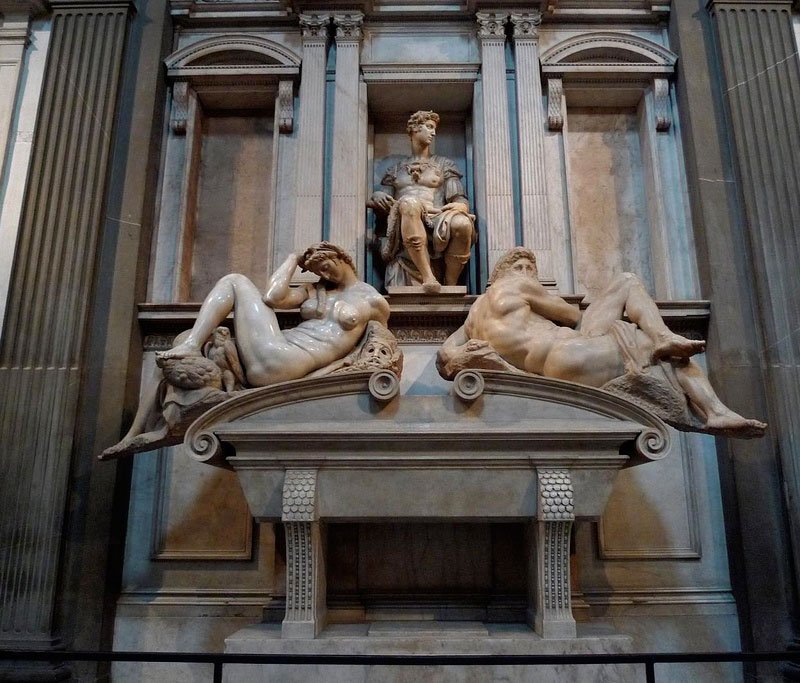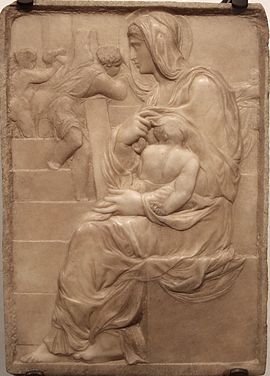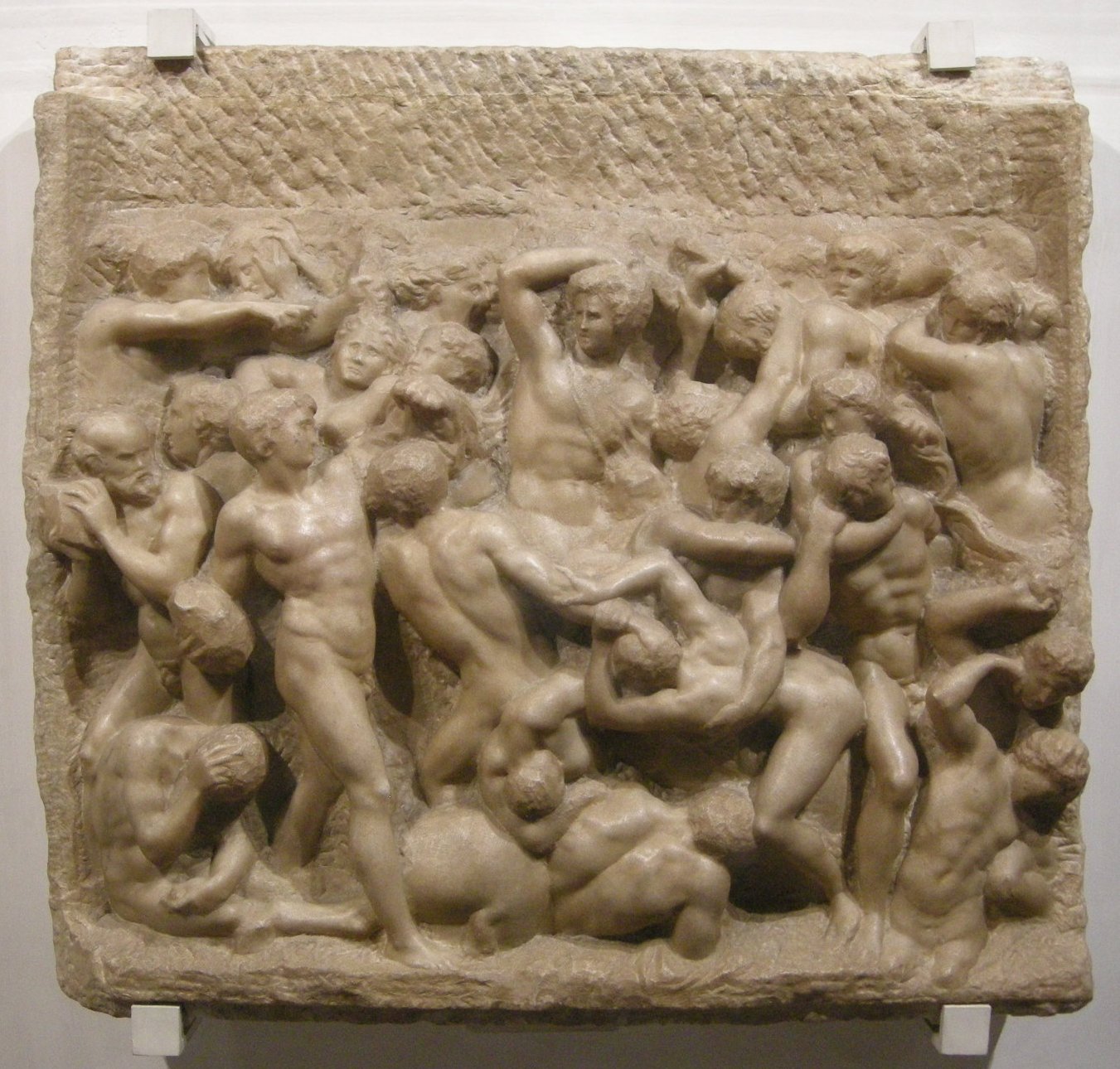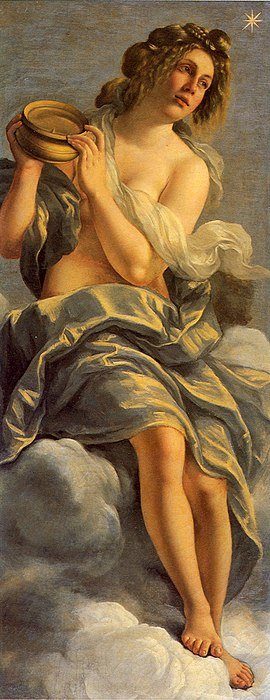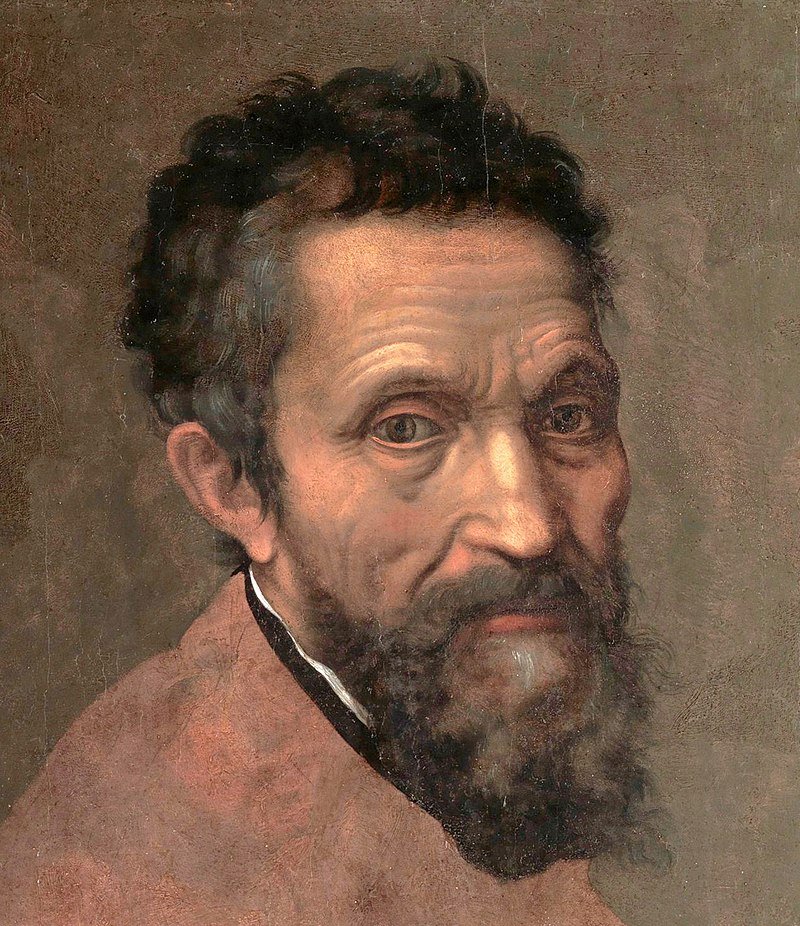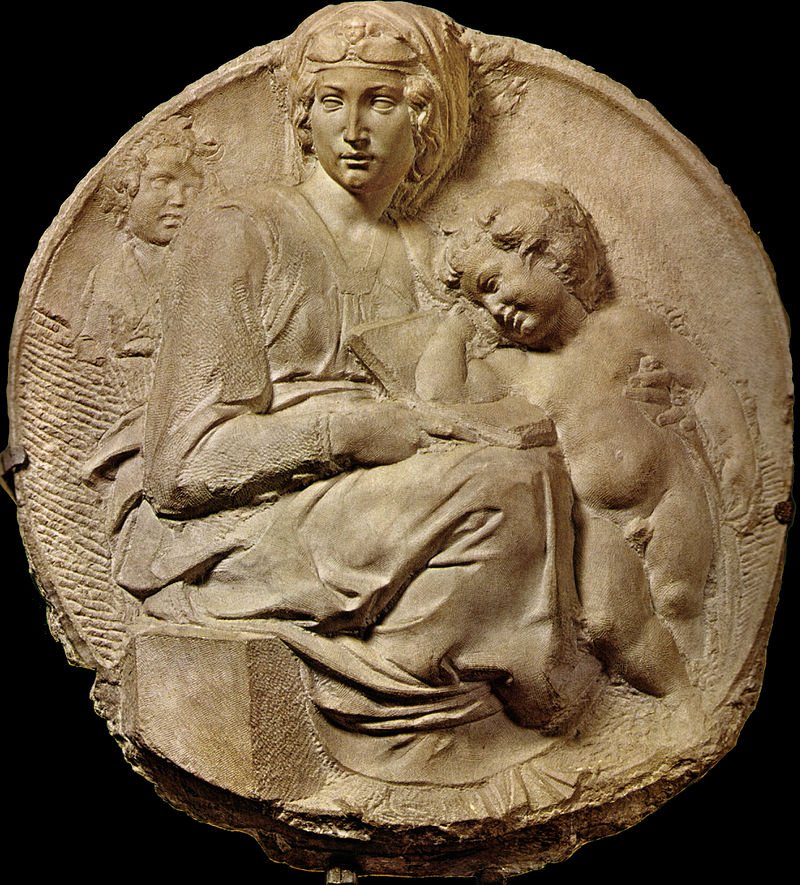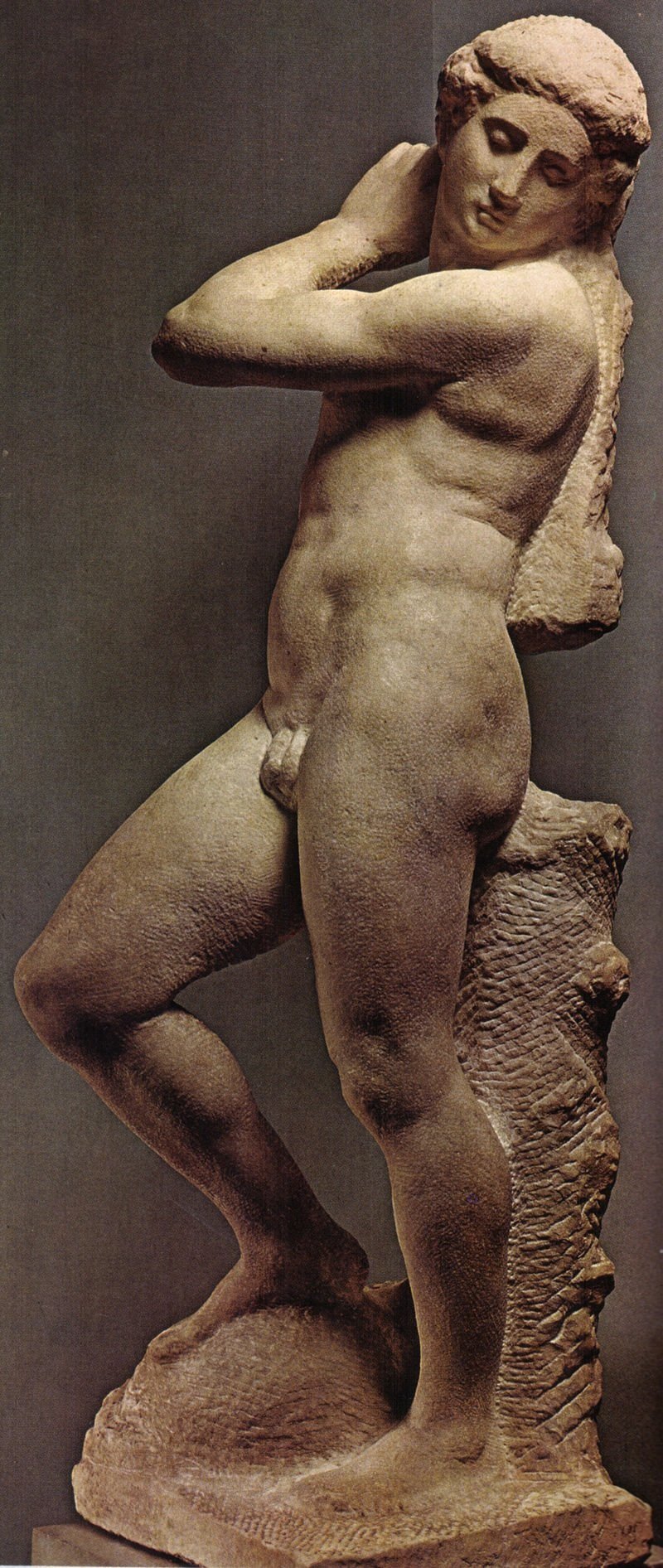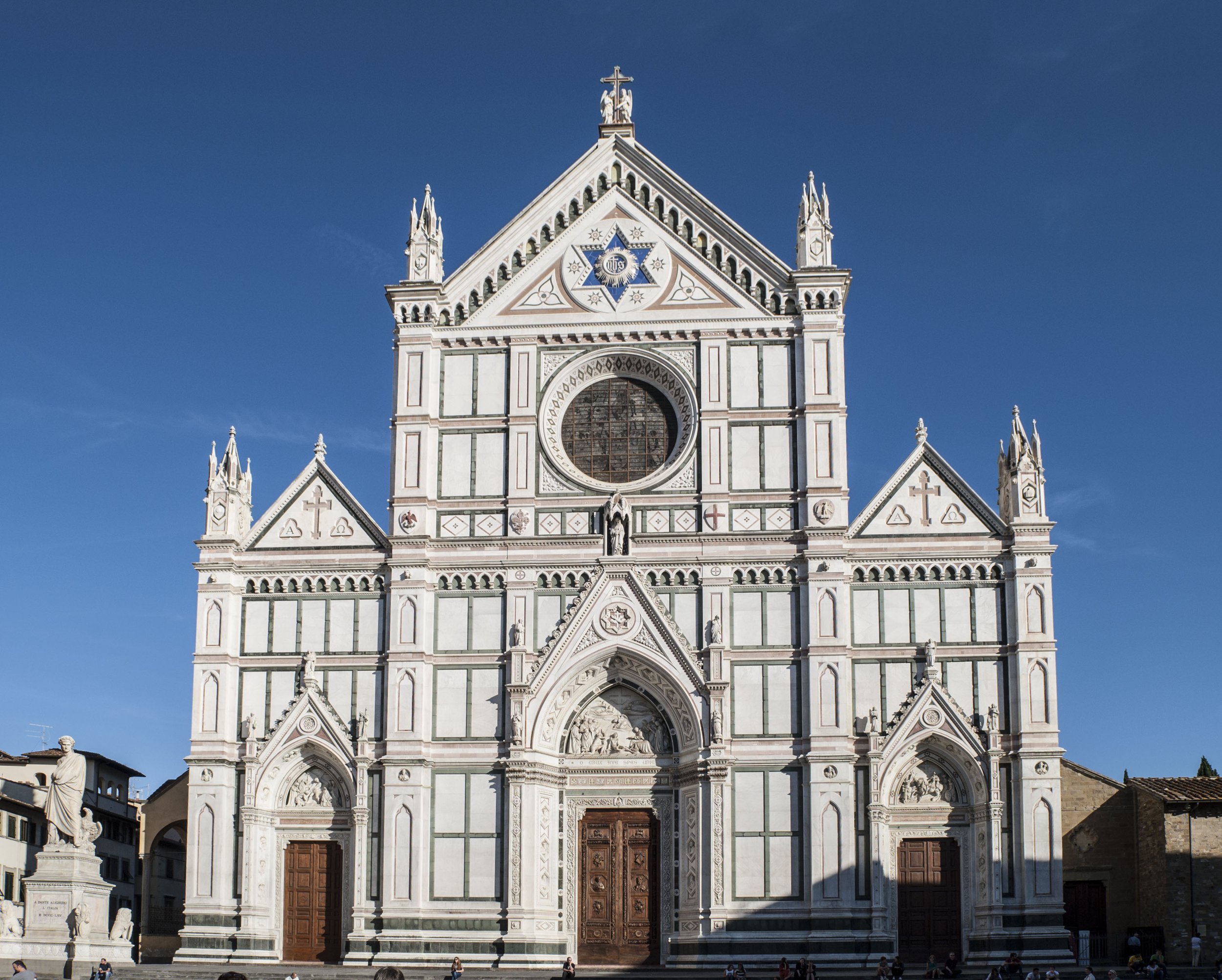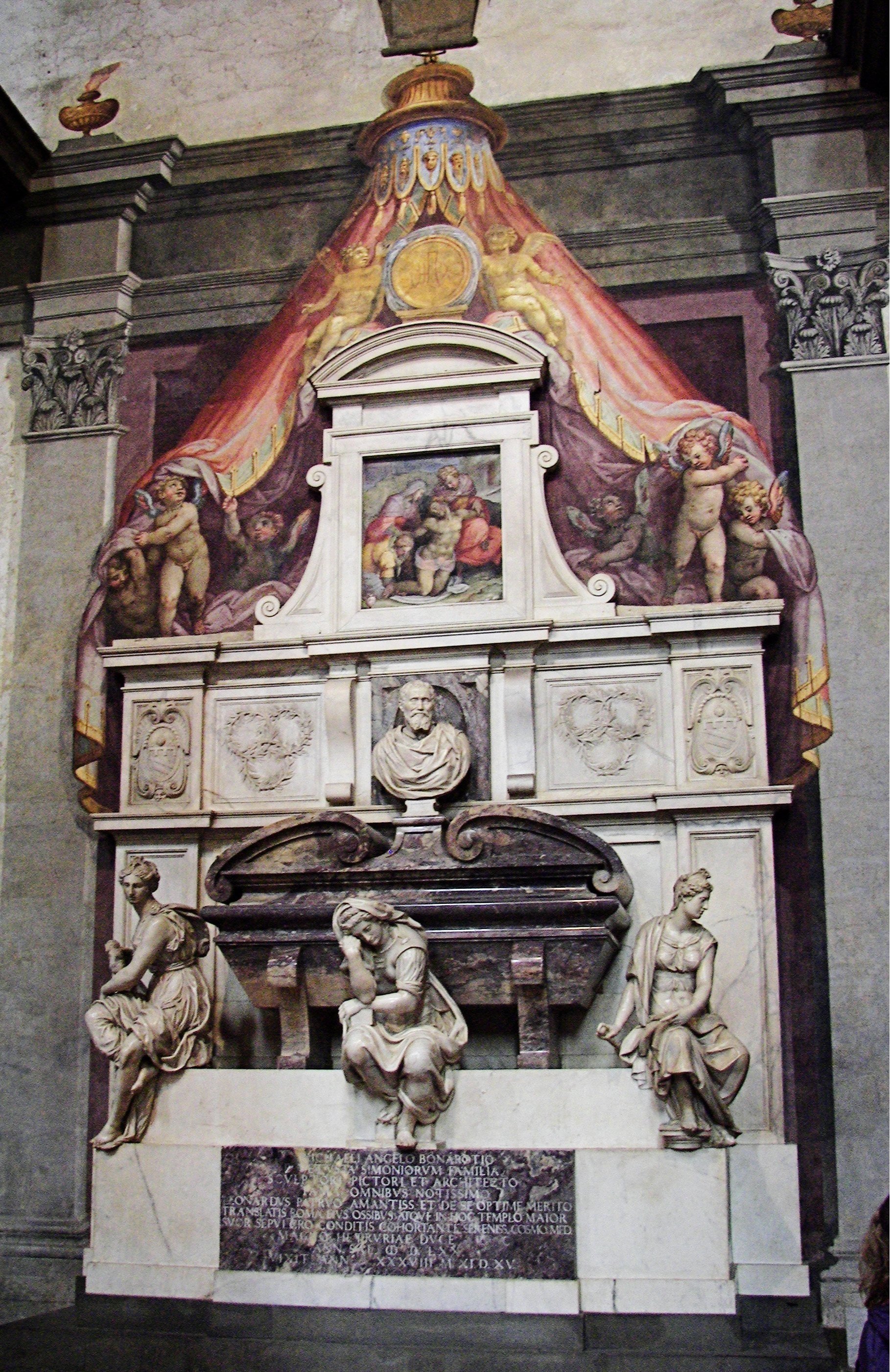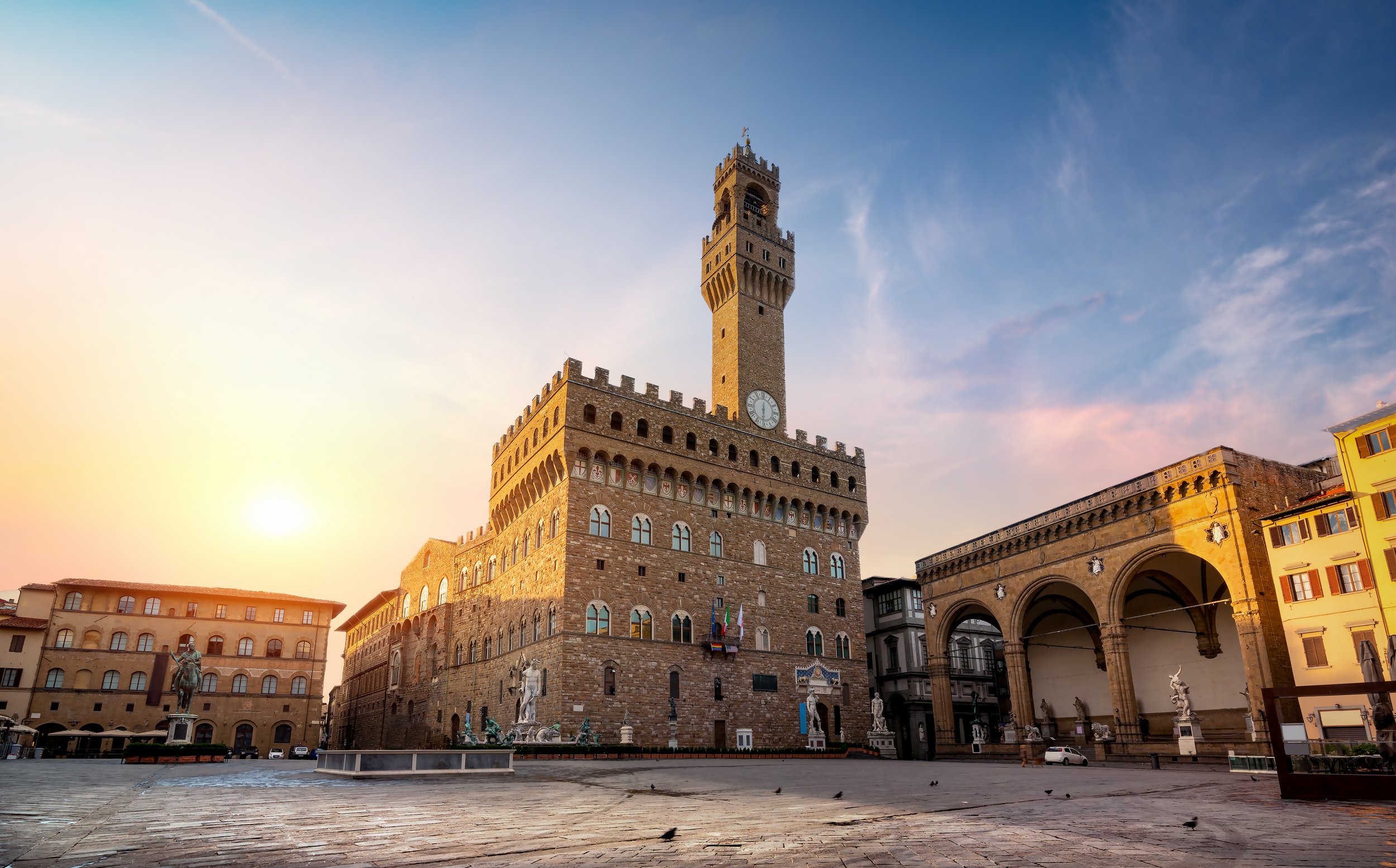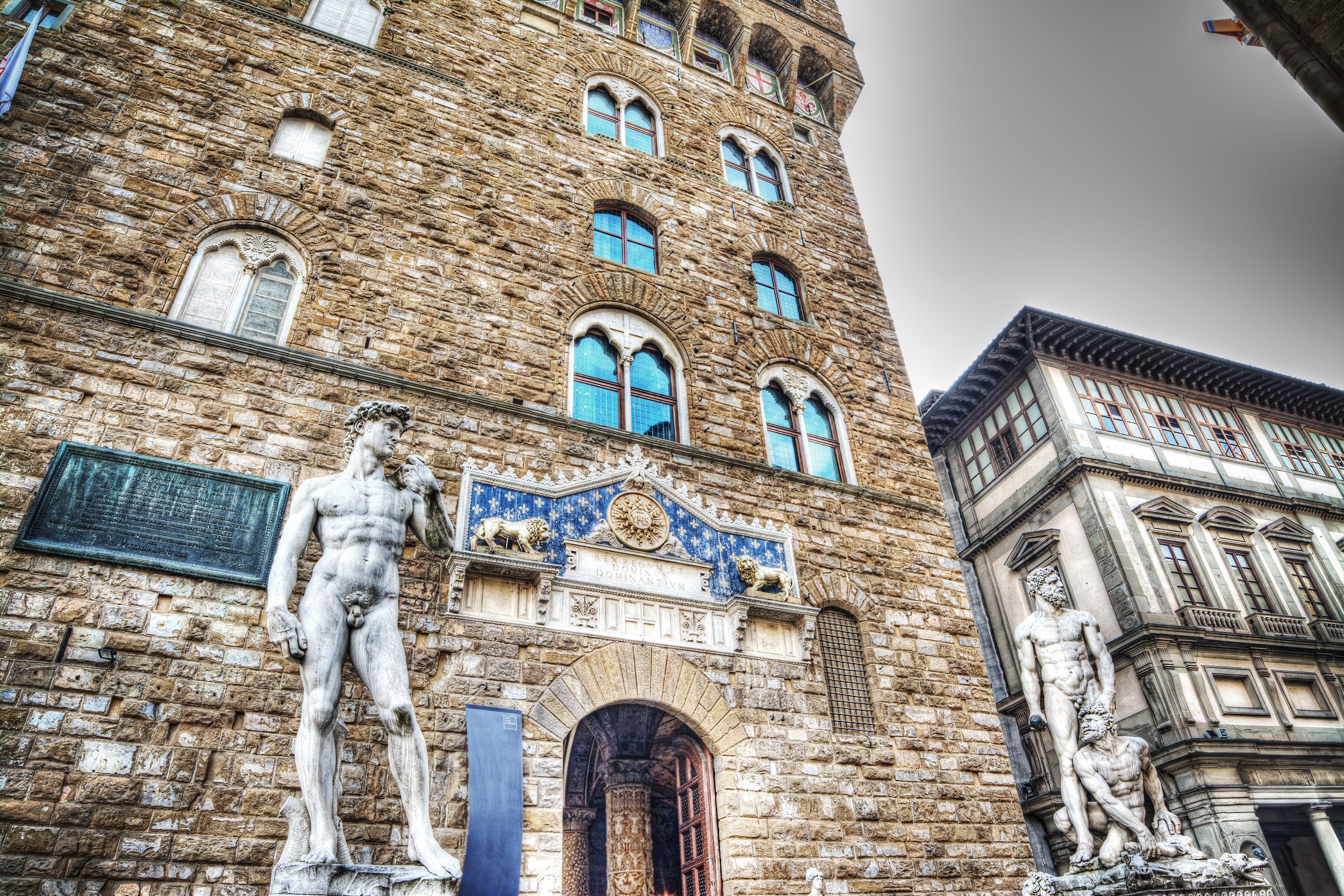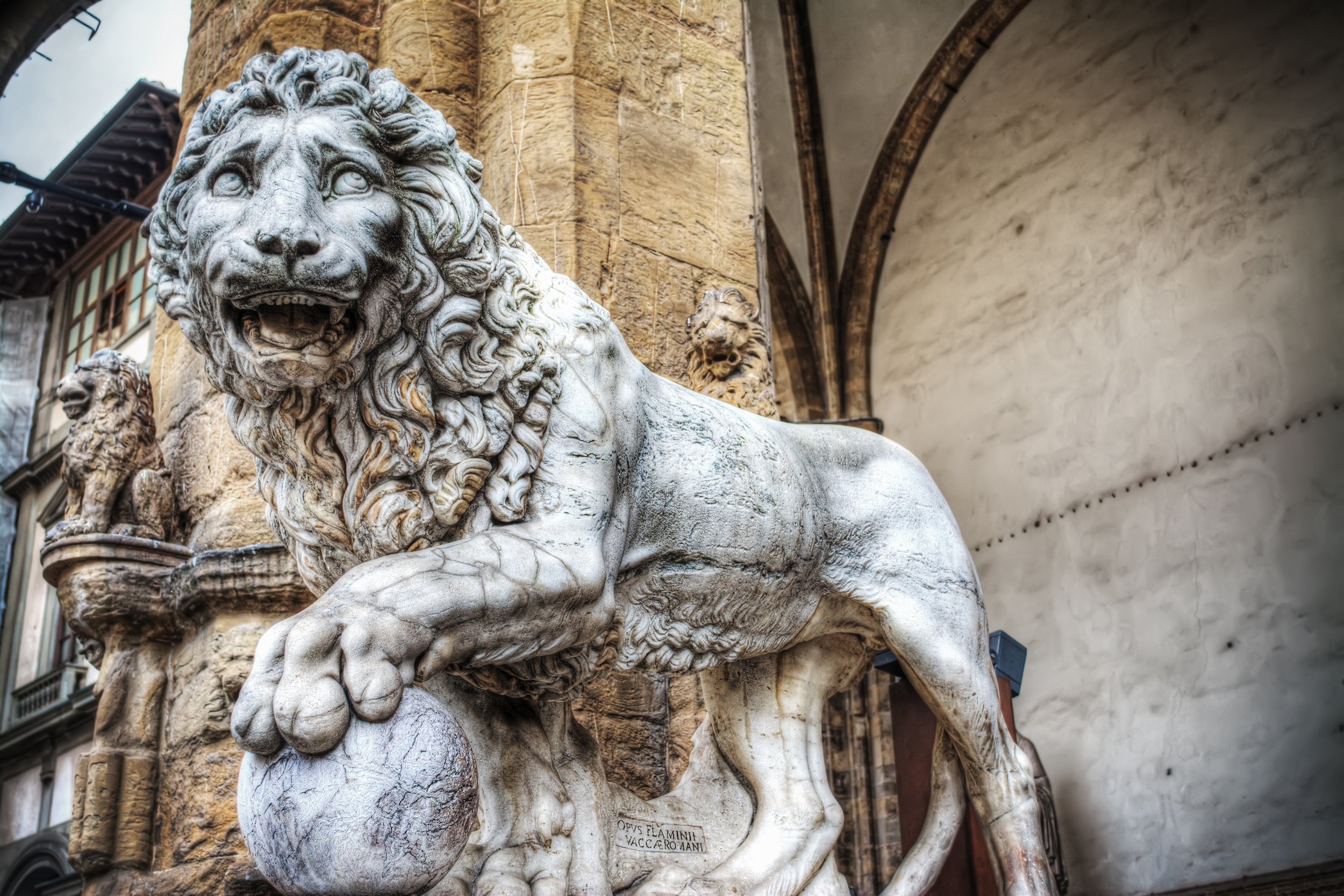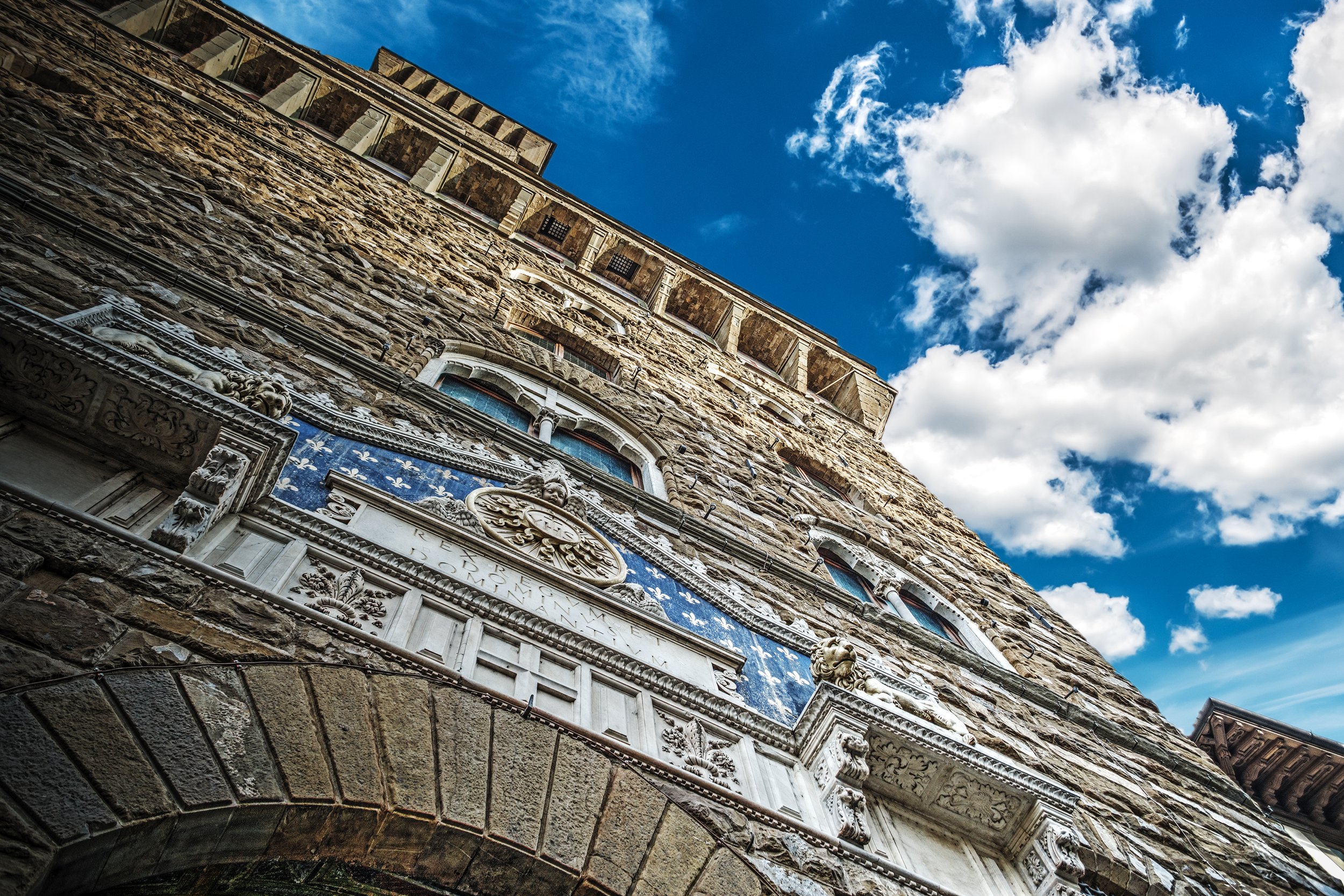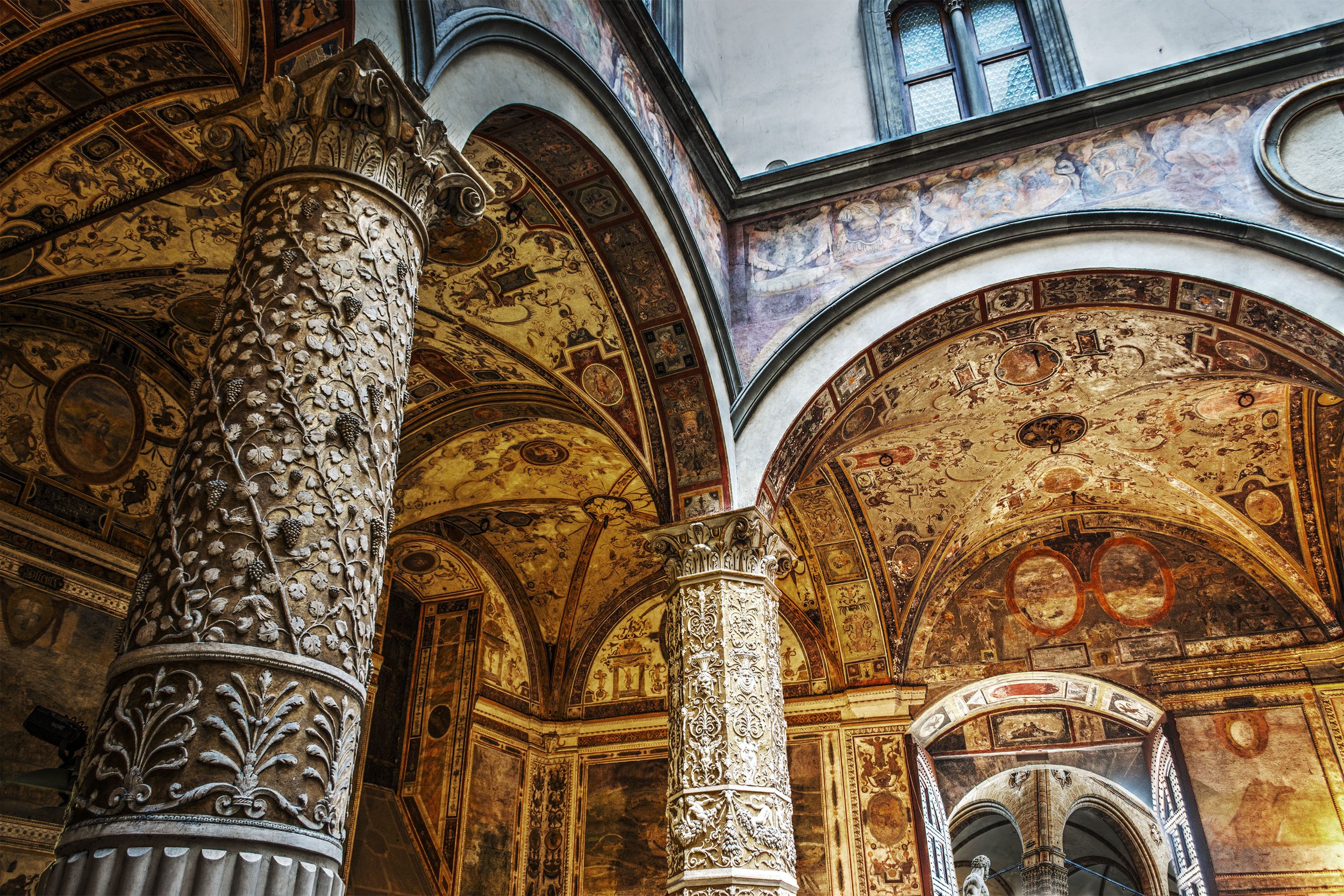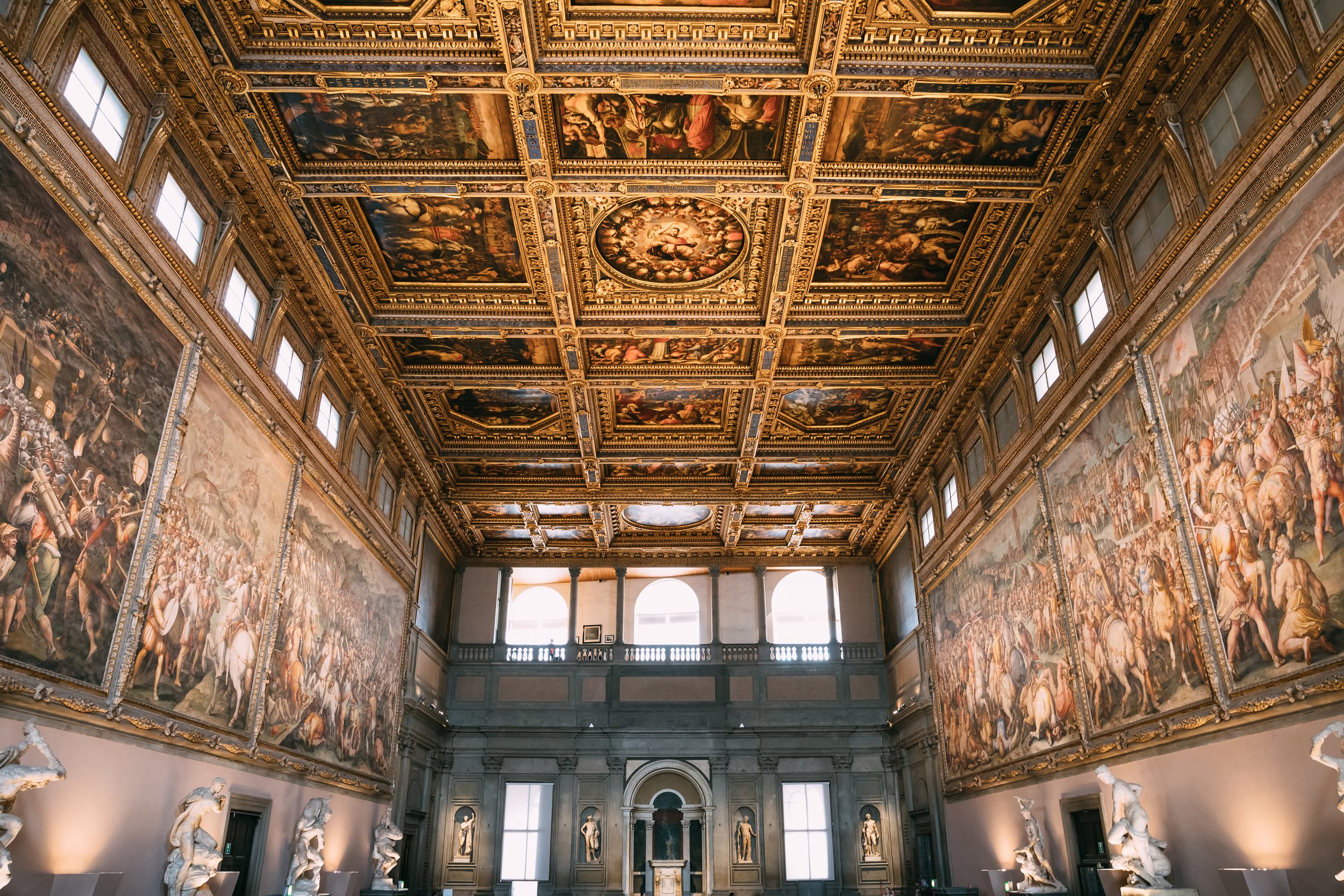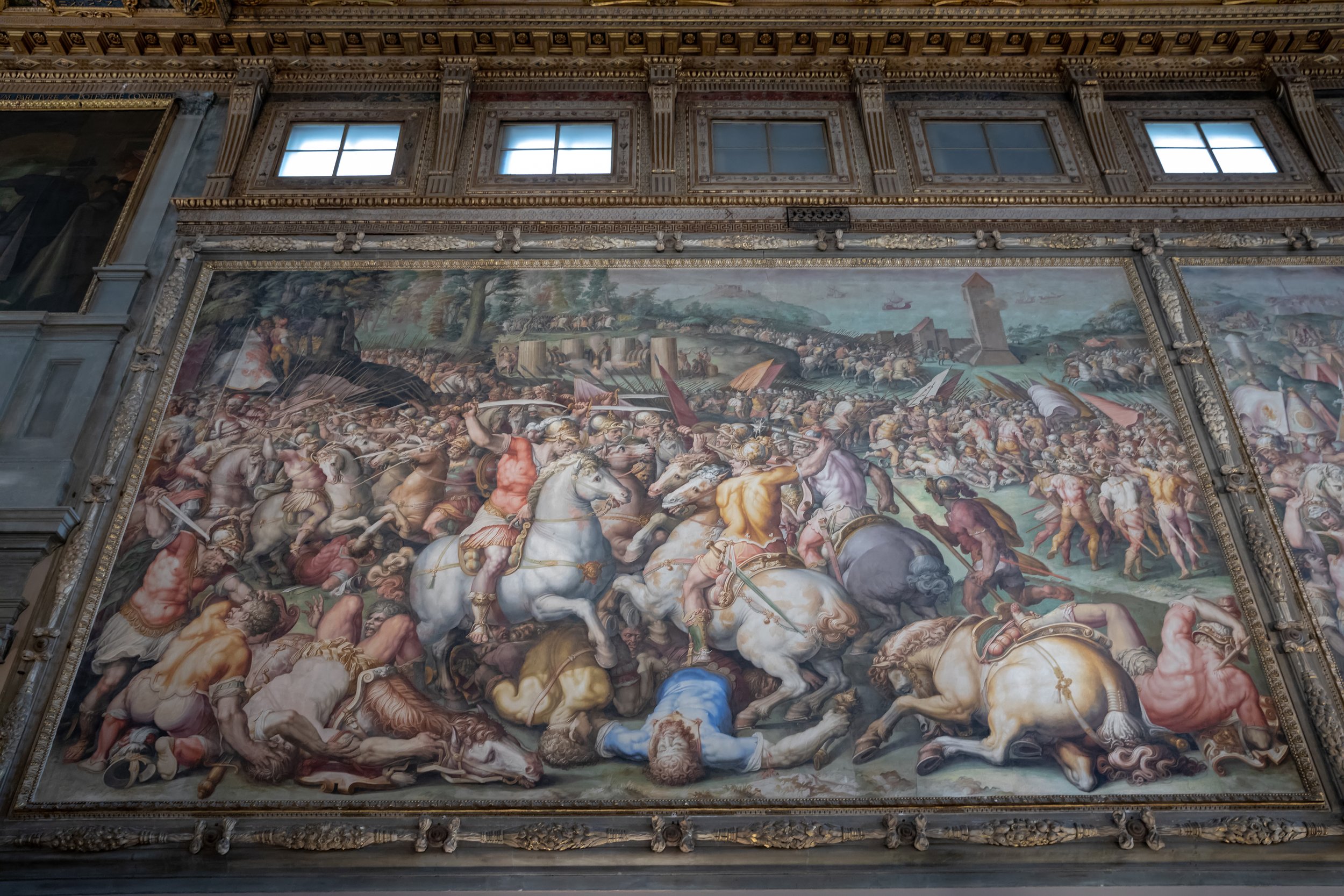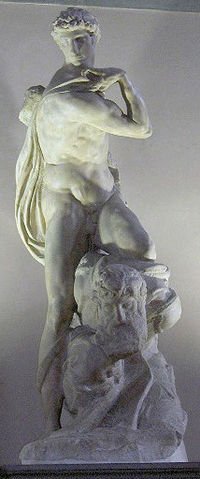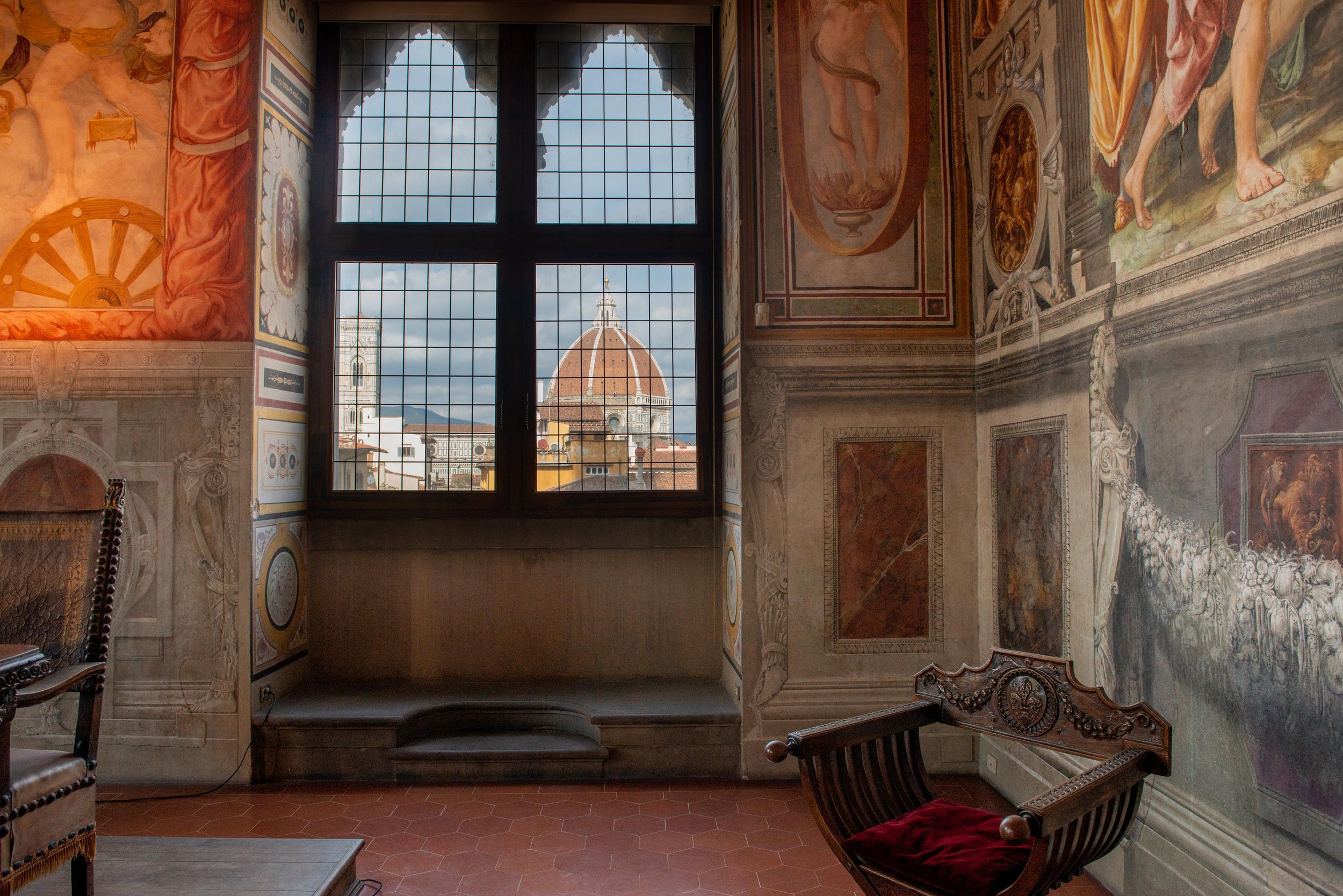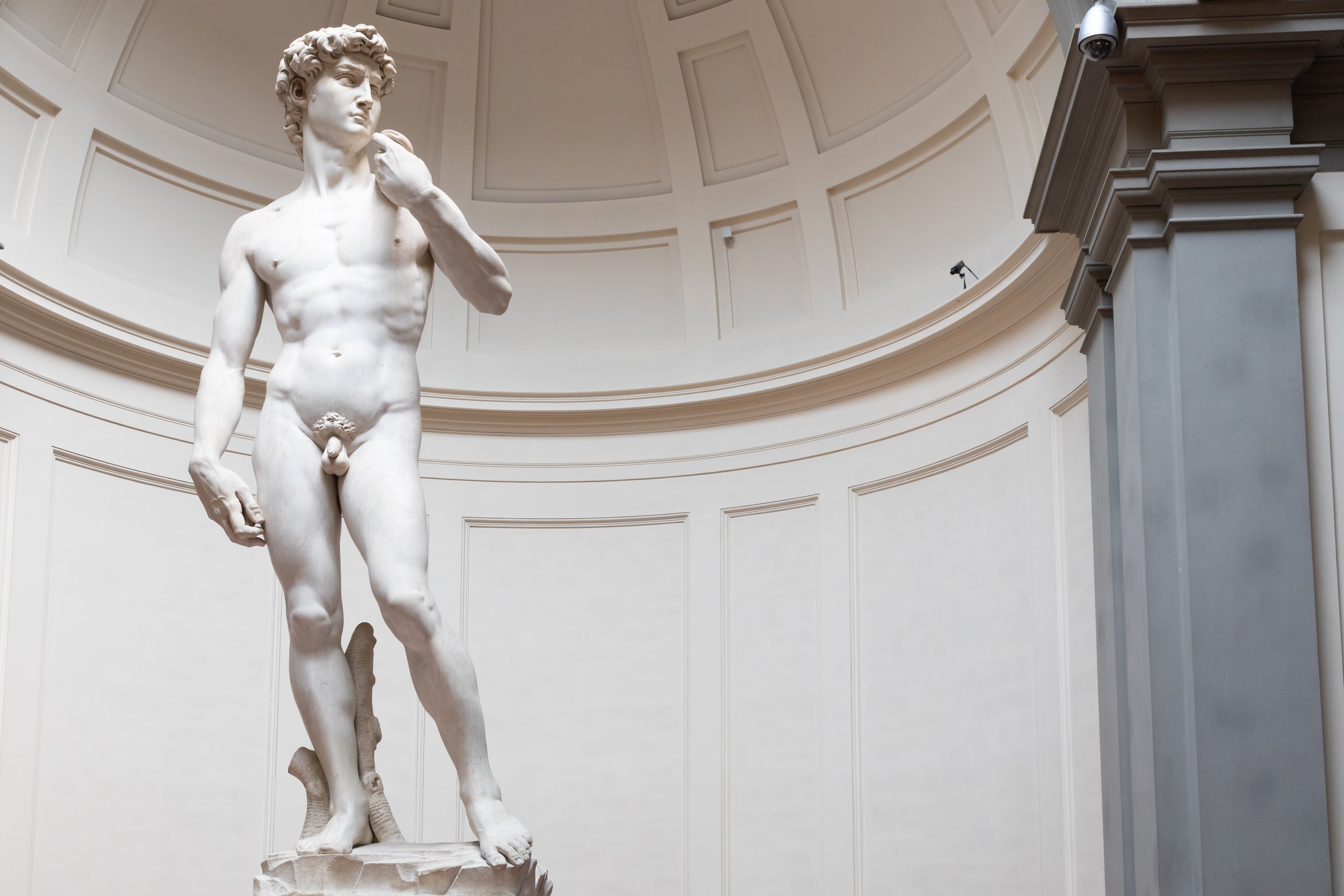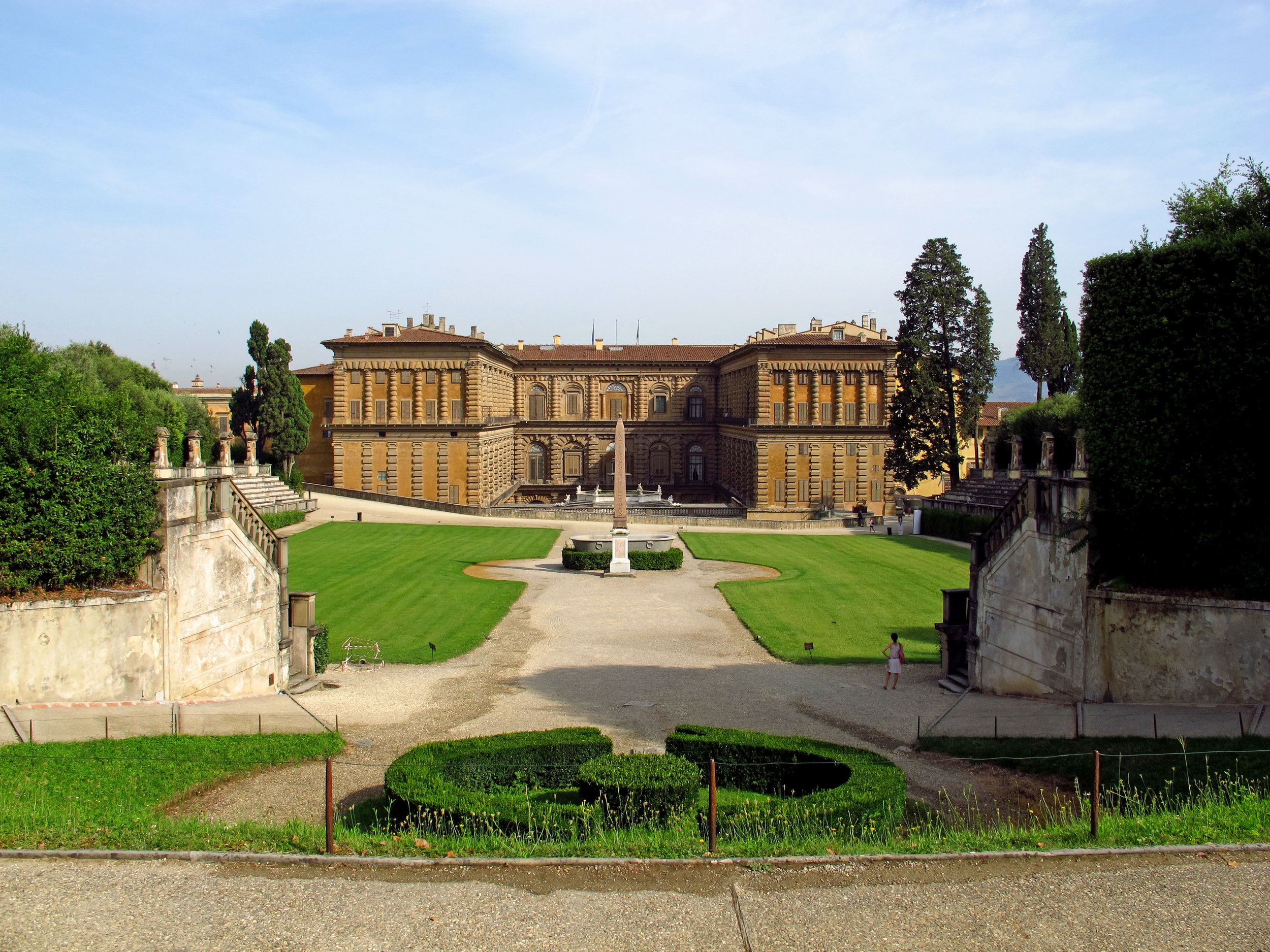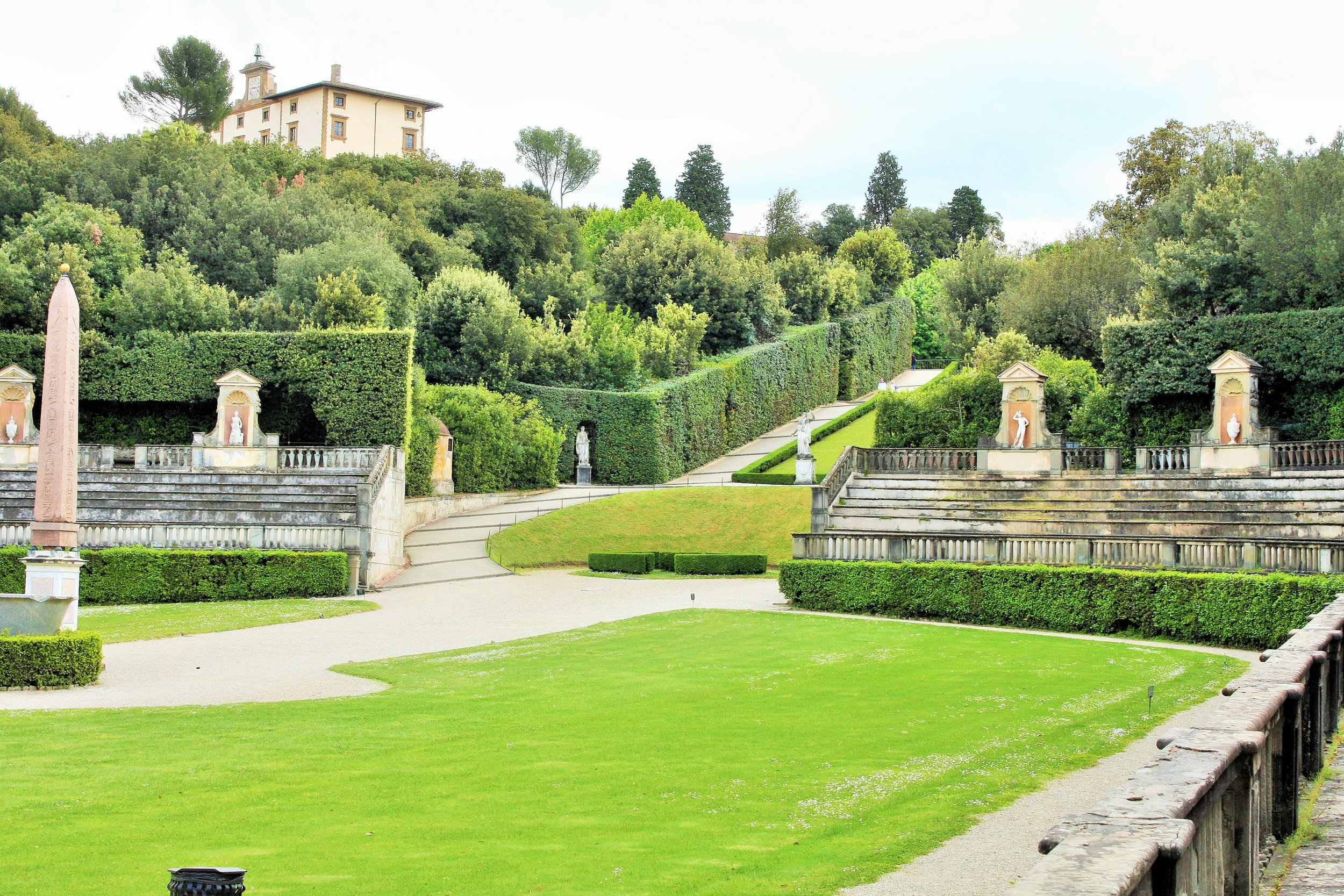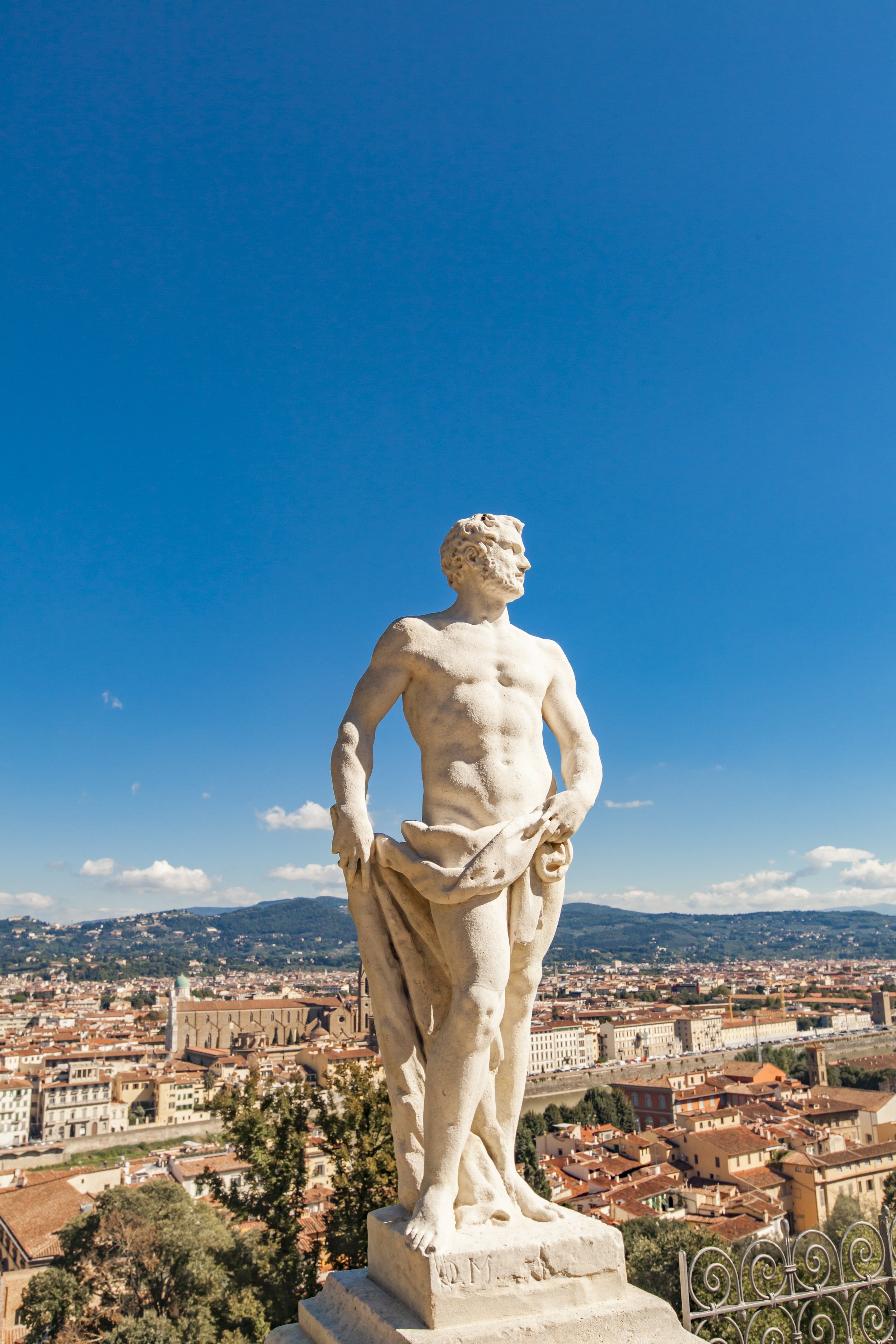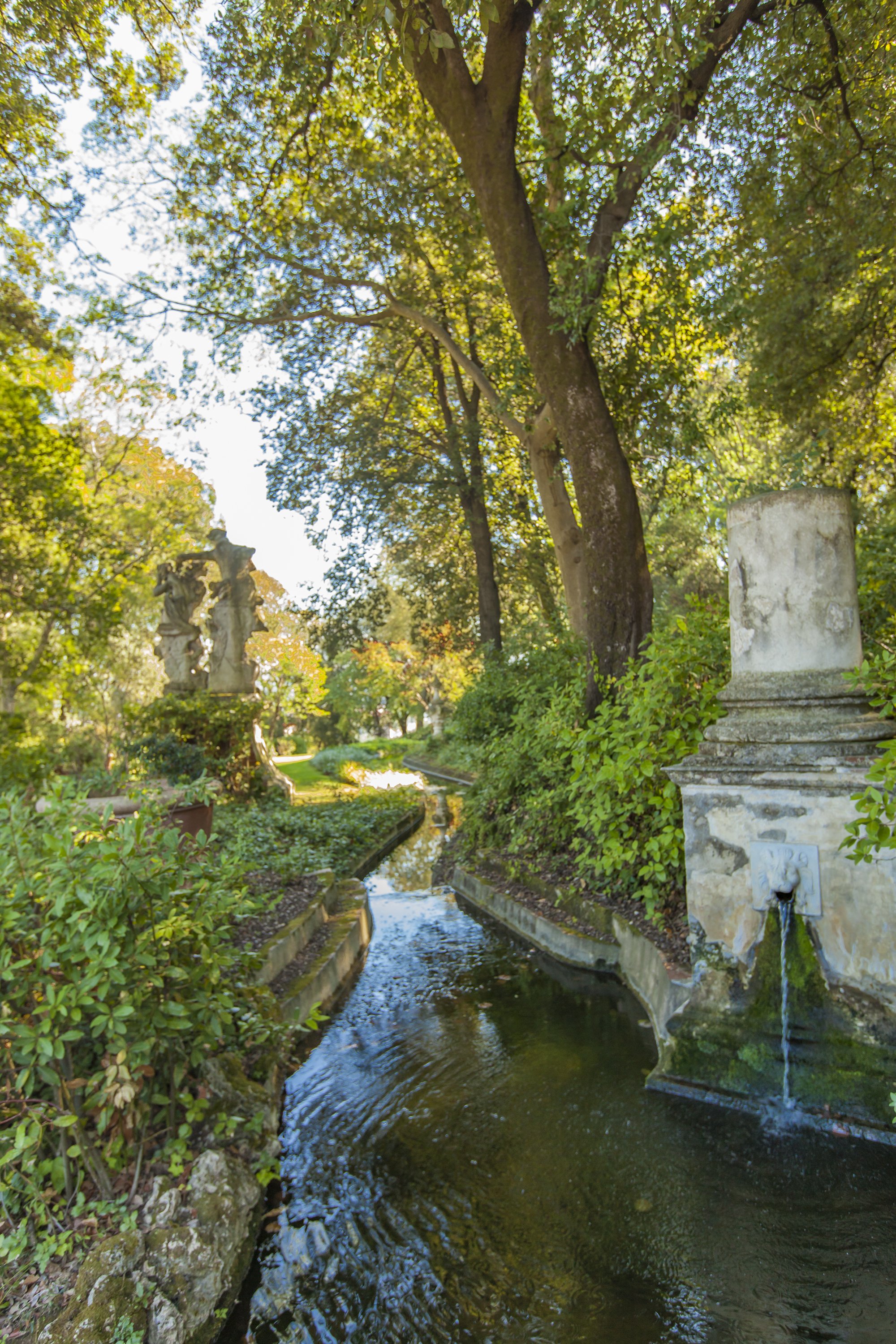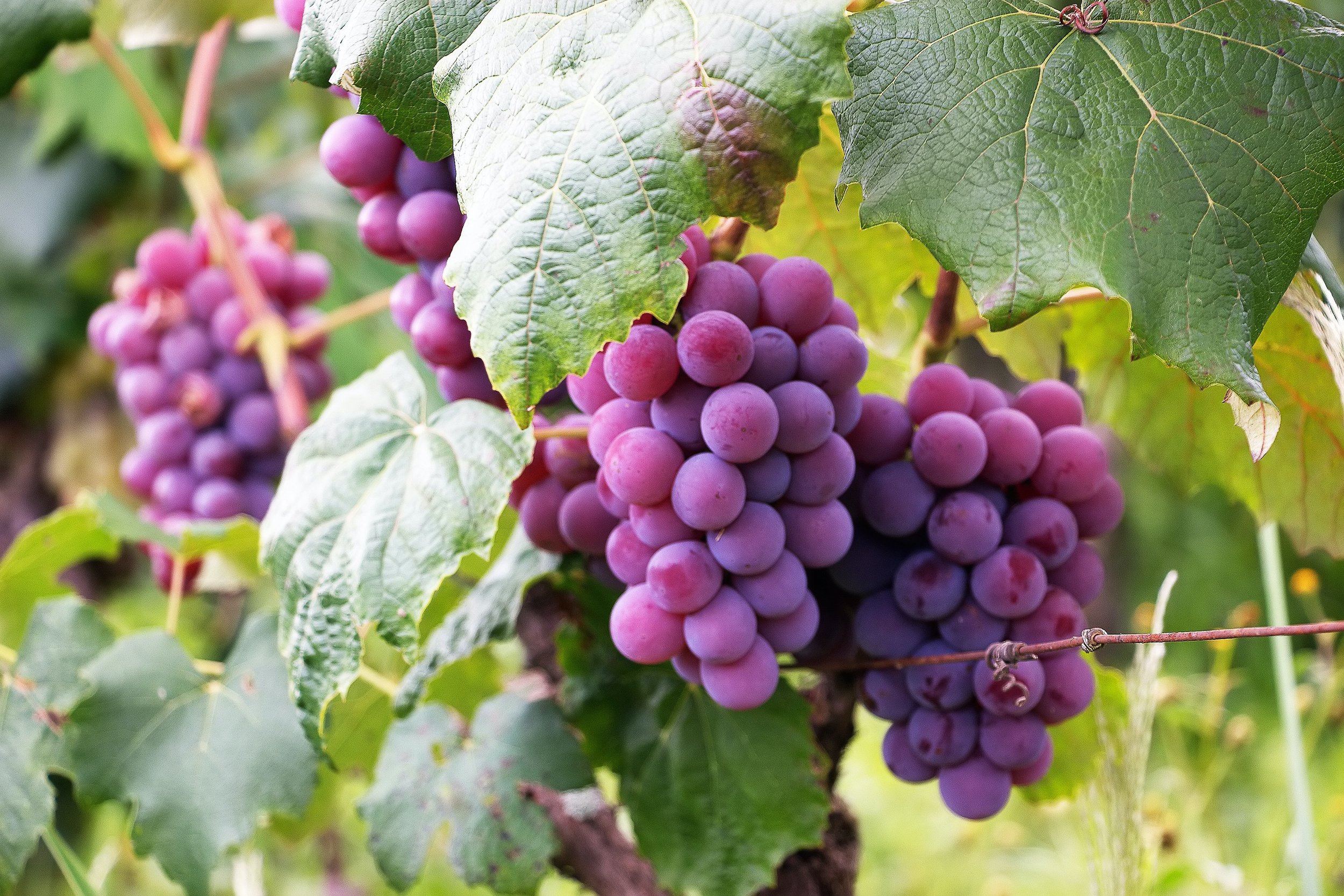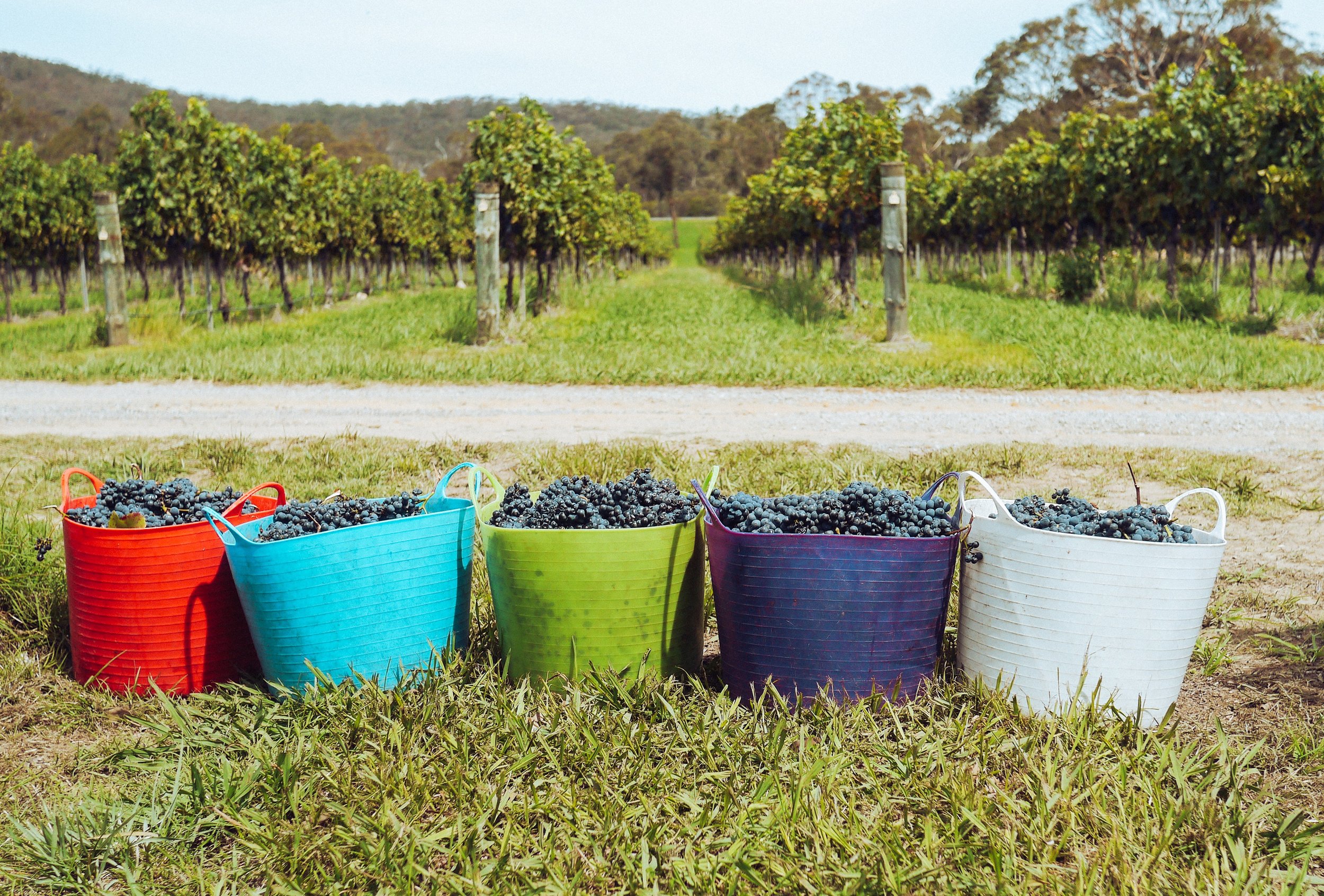Bella Firenze
We adore this magnificent jewel. Florence (Firenze) is truly one of the greatest treasures on Earth. Spend some time here and it will leave its mark on your heart and mind - forever. The Renaissance began in Florence in the 15th Century, largely due to the genius and support of the Medici family. The Medici largesse of intellectual and financial capital supported artists, poets, architects and scientists who left a legacy of riches that endured, and we still enjoy six centuries later.
The city is a masterpiece of art that pleases the eye at every turn, with its Medieval, Gothic and Renaissance architecture by geniuses like Michelozzo, Michelangelo, Arnolfo di Cambio, Giambolgna and Brunelleschi. Inside the buildings, you will find treasured frescoes, paintings, mosaics and sculptures, and scientific discoveries by a very long list of artists, humanists, poets and scientists including works by Ghiberti, Donatello, Gaddi, Vasari, Machiavelli, Galileo, Cimabue, Fra Angelico, Ghirlandaio, Michelangelo, Lippi, Botticelli, Masaccio, Giotto, DaVinci, Cellini, Della Robbia, Bronzino, ancient unnamed Greek and Roman sculptors and so, so many more.
For more details on Florence, five walking tours, hotel and dining recommendations, check out our suggestions presented in this guidebook:
Antonia’s Italy: Walking Tours of Florence - Its Art, Food and Fun
You’ll find the paperback and eBook on Amazon at this link: Amazon.com: Antonia's Italy: Walking Tours of Florence - Its Art, Food & Fun eBook : Accili, A.: Books
It is impossible to “see” and “experience” all of Firenze in a few days or months. Its rich history cannot be abbreviated in a few paragraphs or guidebooks. So, we will try to give you a taste of its delights hoping you will return for more. We have compiled a list of experiences that will give you a flavor of this magnificent center of modernity and art which include:
Following the Path of Michelangelo di Buonarroti. Here is a list of what you might like to see including brief descriptions to wet your appetite:
The Palazzo Medici Riccardi
San Lorenzo Church, The Medici Chapel and Laurentian Library
Casa di Buonarroti
The Bargello Museum
The Church of Santa Croce
The Palazzo Vecchio
The Academy
The Church of Santo Spirito
2. Gardens
The Boboli Gardens of the Palazzo Pitti
The Bardini Garden
3. Fra Angelico
The Church of San Marco
4. The Markets
There is no particular order to follow as you explore this glorious city, and this is by no means an extensive list. What follows is a condensed list of suggestions for those who have just a few days to experience this gem provided to you by an American, the founder, who lived in Florence for a year at the age of 20 and has returned to this glorious city many times over the last 40 years.
1. Following the Path of Michelangelo di Buonarroti
Palazzo Medici Riccardi
Firenze was Michelangelo’s adopted home. He spent much of his life in Rome but he considered himself to be a Florentine. Here he flourished, first in the workshop of his master teacher, Ghirlandaio, at the tender age of 13, then as a favored “son,” apprenticed to and sponsored by Lorenzo de’ Medici.
The Palazzo Medici Ricardi is in the heart of Florence, two blocks from the Duomo on Via Cavour 1. Michelangelo lived in the palazzo for two years. Michelozzo was the architect of this home for the Medici family. The design of this magnificent palazzo was the first of its kind, elegant, perfectly proportioned, representing the age of the Renaissance. It became the style for palazzos among the wealthy families of Florence and other communities for the next two hundred years. The street level is now used by the local police.
Michelangelo lived here for two years. In these walls, he met other artists, wealthy families, philosophers, men of the Church like Fra Savonarola, and developed a close relationship with Giulio, a nephew of Lorenzo, who later became Pope Clement the VII. Giulio became an important figure in Michelangelo’s life and commissioned several works including the Laurentian Library which is included in this list of places to visit during your stay in Firenze.
Walk upstairs to see the Chapel of the Magi painted by Benozzo Gozzoli. The fresco is one of the most magnificent of the Renaissance. “A young Lorenzo il Magnifico leads the procession on a white horse, followed by his father Piero the Gouty and the family founder, Cosimo. Then come Sigismondo Pandolfo Malatesta and Galeazzo Maria Sforza, respectively lord of Rimini and Milan. After them is a procession of illustrious Florentines, such as the humanists Marsilio Ficino and the Pulci brothers, the members of the Art Guilds and Benozzo himself. The painter can be recognized for he is looking towards the observer and for the scroll on his red hat, reading Opus Benotii.” (Attributed to travelingintuscany.com).
San Lorenzo and the Medici Chapel
One block behind the Palazzo Medici Ricardi you will find the parish church of the Medici, San Lorenzo, and one of the oldest structures of the city. Michelangelo spent nine years creating the sculptures for his benefactor’s tombs, at the request of the Medici Pope, Pope Clement VII, (Michelangelo’s boyhood friend, Giulio Medici). The tombs are at the back of this church and known as the Medici Chapel.
While in the San Lorenzo complex, don’t miss one of Michelangelo’s favorite architectural projects, he worked on with delight for over 10 years, the Laurentian Library.
Casa di Buonarroti
Fifteen minutes “a piedi” (by foot) from the San Lorenzo, head towards Santa Croce, where you can visit a home once briefly occupied by Michelangelo called Casa di Buonarroti, now a small museum at Via Ghibellina, 70. Here he lived in one of the five structures he owned while working on the facade of the Duomo.
At Casa Buonarroti, there is also an extensive library of 10,000 books including letters from Michelangelo, some of his notes and sketches and some fabulous oil paintings to honor his work. One painting is of special importance. You will find an oil painting by the first woman allowed admittance to the Academy of Art, Artemisia Gentileschi, The Allegory of Inclination. (See the photo above.) “This painting depicts "Inclination," or inborn creative ability, one of the "eight Personifications" attributed to the Renaissance master. Seated on a cloud, she holds a mariner's compass and is guided by a star above, signifying his natural disposition to greatness.” (Bissell, R. Ward (1999). Artemisia Gentileschi and the Authority of Art : Critical Reading and Catalogue Raisonné)
The Bargello Museum
Not far from Casa Buonarroti you will find The Bargello Museum, formerly a prison, a favorite museum in Firenze at Via del Proncosolo, 4. You will see Michelangelo’s masterpieces from different periods of his life as a painter, sculptor, architect, and poet. Visit the Michelangelo Room. Here you will find a small round piece of marble with the Virgin and her child called the Pitti Tondo. Michelangelo’s sculpture of Bacchus is also housed in the Bargello and his unfinished Apollo/David also live here.
While you are at The Bargello, spend some time looking at Donatello’s David, the first nude sculpture created in over 1000 years at the time. It caused quite a stir in Florence at its unveiling.
The Church of Santa Croce
The Franciscan Church of Santa Croce
Santa Croce is one of the most important Franciscan churches in Italy. Legends abound that it was founded by St. Francis of Assisi himself. Michelangelo is buried here along with Machiavelli and Galileo. Michelangelo spent time studying Giotto’s frescoes near the main altar. Giotto’s infusion of emotion in the faces of Jesus, the Disciples, followers and others, inspired Michelangelo. Look for Giotto’s frescos of St. Francis to the right of the main altar. The frescos alone are worth a trip to Florence. The tomb of Michelangelo was designed by Giorgio Vasari who wrote The Lives of the Painters. Vasari knew and appreciated the genius of Michelangelo. “Above the tomb there are three sculptures that represent the personifications of Painting, Sculpture and Architecture. These figures appear saddened by the disappearance of the great master. But the whole of the tomb is a mixture of painting, sculpture and architecture.” (Tomb of Michelangelo Buonarroti, Basilica of Santa Croce, Florence - Villages of Tuscany (borghiditoscana.net). The works you see are “the bust of Michelangelo (work by Battista Lorenzi) decorated with statues of Architecture (work by Giovanni dell’ Opera), sculpture (work by Valerio Cioli), Painting (work by Battista Lorenzi) and frescoes the work of GB Naldini.” Tomb of Michelangelo Buonarroti, Basilica of Santa Croce, Florence - Villages of Tuscany (borghiditoscana.net)
Michelangelo died just shy of turning 89 in Rome.
Art that inspires, in the form of leather craftsmanship, lives on here in the oldest modern leather school in Florence, the Scuola del Cuoio which is open to the public. It began after WWII to house, employ and teach male orphans a skill after the war and is currently housed in the old Franciscan dormitory, behind and connected to the church. For those of you who are interested in St. Francis of Assisi, one of his tattered robes and rope belts are in a glass case near the entrance to the school located in the church’s sacristy.
Palazzo Vecchio
The Palazzo Vecchio has been at the heart of Florentine politics and economics since the 13th Century and continues to play an important role in Florentine life. The great hall, the Salone dei Cinquecento, (The Salon of 500), displays battle scenes that were pivotal to Florence’s ancient successes on the battlefield in the 14th and 15th Centuries. A nine-foot statue called the Genius of Victory lives here sculpted by Michelangelo. His model for the younger man of this unfinished statue, kneeling down on the back of an elder man, was a man he loved, a nobleman named Tomasso dei Cavalieri who was at his bedside when he died.
The Academy
David by Michelangelo Buonarroti
David is certainly one of the most recognized monumental statues in the world and he lives at The Academy, which attracts the attention and commands the awe of millions each year. The Academy was the Harvard, The Oxford of its day for artists. In 1873, the decision was made to move David from the Piazza Signoria to this location. For nine years, David, was in a crate, on-premises, until the space was designed and created to properly fit and display him publicly in the renamed Galleria dell’ Accademia. David was released from the box and placed on his current domed pedestal in 1882 where he can be studied and admired.
Church of Santo Spirito in Piazza Santo Spirito
Michelangelo considered himself to be a sculptor first among his many talents. He carved one piece in wood. You can experience Michelangelo’s exquisite wood carving in the Church of Santo Spirito across the Arno River from The Academy.
Wooden Crucifix by Michelangelo in Santo Spirito Church
The legend of this simple yet striking wood carving is that Michelangelo created it as a gesture of thanks to the priest who allowed him to study the human anatomy in the basement of the church as the bodies were being prepared for burial. This was all done in secret with the permission of the local priest, when Michelangelo was just 17 years old.
Other places to consider seeing MORE of Michelangelo’s work:
Room 41 of The Uffizi is Michelangelo’s Room
2. Gardens
Florence offers several serene gardens. Two are especially lovely due to their views.
The Boboli Garden of the Palazzo Pitti
The Bardini Gardens
The Boboli Gardens of the Palazzo Pitti
The glorious Boboli Gardens are behind the Palazzo Pitti. Enter through the main entrance of the Pitti, through the courtyard. The first thing you will see as you exit is an Egyptian Obelisk and an enormous Ancient Roman basin standing in the amphitheater of the Pitti Boboli Gardens. These two pieces were moved here in 1790 from the Villa Medici in Rome. For history lovers, the obelisk was dedicated to Pharoah Ramesses II, created during his reign in ancient Egypt, which began in 1279 BC when he was just 14 years old. The amphitheater was used as an actual outdoor theater and served as a festive venue for entertainment for over two hundred years. You can walk all over this expansive garden, relax, or bring a picnic and rest.
The Bardini Garden
The Bardini Garden is on top of the hill overlooking the Bardini Museum. It was restored in 2005, offers a safe place to relax with a sweeping view of Florence which is worth the trip and a glass of wine. If you choose to go to the Bardini take a taxi to the top to get to the gardens. It is too steep to walk and too windy to drive. You can also walk to the Bardini from the Boboli if you’d like an extended day of gardens.
3. Fra Angelico and Master Ghirlandaio
The Annunciation by: Fra Angelico in San Marco
The Basilica of San Marco is just a two-minute walk from The Academy and Palazzo Medici Riccardi at Piazza San Marco, 1. In the far-right corner of the courtyard, towards the bookshop, you will see a staircase to the upper “cells” where the Dominicans slept. Thanks to the Medici family, the church and the convent were renovated and rebuilt during the Renaissance to look like a Renaissance structure by Michelozzo, who also designed Palazzo Medici Riccardi for the Medici family as their residence.
You are in store for an image of great beauty. At the landing you will see one of the most beautiful frescoes in Florence - The Annunciation, painted by a Dominican, Fra Angelico (Angelic Friar). He was from the Early Renaissance who earned his reputation from these frescoes in San Marco. There’s more of Fra Angelico’s frescoes throughout the floor. He painted a fresco in each of the little cells and each is unique. Peek inside. The library, also designed by Michelozzo, is on the same floor. This contains some gorgeous old manuscripts all hand painted. Walk downstairs to the bookstore for another surprise. There you’ll find a striking painting of The Last Supper painted by Michelangelo’s teacher, Master Domenico Ghirlandaio. This is a hidden gem in Florence and absolutely stunning.
4. The Markets
Like to haggle for great deals? The markets await you. Shopping in Florence is a cultural experience. You’ll find traditional leather goods like purses, belts, wallets and Florentine paper. Traditional Italian fruit, produce from local farms, fresh meats and fish, a huge selection of cheeses, fresh pasta, olives, jams, and wine await you. The Central Market, near San Lorenzo, is populated with tourists. For a traditional market, where you’ll find locals, visit the Sant’ Ambrogio market in Piazza Lorenzo Ghiberti.
The Central Market
Sant’ Ambrogio Market
The Central Market
The Sant’ Ambrogio Market
EATING YOUR WAY THROUGH FIRENZE
Walking through this glorious city and trying Tuscan “cibo e dolci” (food and sweets) is a joy!
Breakfast
A typical “collazione” (Italian breakfast) is best at a local bar. A coffee with a fresh “brioche” or another sweet of some type is what most Italians eat in the morning, children and adults alike. A brioche is a croissant. You can have one that is plain or one that is filled with pudding, cream, chocolate or the jam of the season. Occasionally, Italians will also add a piece of cheese or meat, like prosciutto or salami, or a small yogurt to their breakfast.
If you are staying in a hotel that offers breakfast, you will most likely be served some of these items and more. But if you want to experience breakfast, Italian style, choose a Bar which offers sweets, stand up at the counter, point to what you’d like, order your preferred type of coffee, and enjoy.
Here are some of my favorite breakfast haunts:
Melaleuca Firenze - a pasticceria and bistro. Fantastic coffee and mouth-watering baked goods. On Lungarno delle Grazie, 18 - (a few blocks from Santa Croce heading towards the Arno).
Caffe Gilli - in Florence for centuries on Via Roma, 1r. Pricey. Delicious pastries.
Oblate Cafeteria - an outstanding espresso bar with a view of the Duomo. On Via Giosue Carducci, 2/4r.
Lunch and Dinner
Follow your nose! There are so many fabulous places to eat in Firenze!
My favorite place to eat lunch or dinner is Trattoria la Casalinga, just off the Piazza Santo Spirito on Via dei Michelozzi, 9r. The family that opened this trattoria after the perils of WWII, still own and operate this welcoming place today.
Pandemonio di Casa Brogi on Via del Leone, 50r. Family run since 1992 known for its fish dishes.
Places to Eat Sweets (“Dolci”)
The oldest candy store in town is Dolce Emporio, run by Alfredo Cozzi. Try the cookies by Nonne di Frediano. Borgo S. Frediano, 128R. The Central Market and the Sant’ Ambrogio market offer many sweets.
Chocolate shops and bakeries are numerous in Florence. A favorite bakery is located in Piazza San Marco near the bus stop.
WINERIES & ENOTECA TO VISIT IN and NEAR FLORENCE
In Florence
Tuscany is a rich region of fabulous wines and gorgeous, often historic wineries. Be sure to make a reservation before walking in or driving to a winery or an enoteca.
In the town of Florence, visit Enoteca Alessi. Check-in with Antonella at Via Delle Oche, 27r, +39 055 214966.
And don’t pass up the wine windows in Florence. They are making a comeback! Thanks to Cosimo de Medici in the mid-1500s, you can walk up and order a glass of wine through a little hole or little arched door (a buchette di vino). These little windows to paradiso only exist in Tuscany. Try Babae for a glass through the window at Via Santo Spirito, 21r, +39 055 6144429. There is not an official list of these buchette di vino - yet. So stay tuned as more are reopened in 2022 and beyond.
Enoteca Pitti Gola e Cantina is located in the Palazzo Pitti at Piazza Pitti, 16, +39 055 212704, in the Oltrarno section of Florence. You can choose a dining experience to accompany your tastings. They offer chianti and sparkling wines paired with your lunch or dinner. If you prefer, the Pitti also offers a full dinner menu nearby at The Osteria.
La Cantinetta dei Verrazzano is located at Via dei Tavolino, 18r, +39 055 268590, between Santa Maria Novella and San Niccolo’. Most of the ingredients are from the Verrazzano farm located about 45 minutes outside of the city on the Verazzano estate. Flavors from the wine and the cantinetta’s food selection are sweet and savory, simply scrumptious.
Cantinetta Antinori
On the ground floor of the Palazzo Antinori you will find the charming Cantinetta Antinori in the city center at Piazza degli Antinori, 3, +39 055 292234. The palazzo was designed by one of Brunelleschi’s apprentices, Giuliano da Maiano in the mid-1400’s and is a splendid example of Renaissance architecture you will readily enjoy sitting in the inner courtyard as you dine and taste the wines from the Marchesi Antinori labels. Cantinetta Antinori Florence (cantinetta-antinori.com)
Wineries Nearby in the Countryside of Florence - Chianti Country
Antinori nel Chianti Classico in San Casciano, is one of several of the Antinori wineries in the area and hosts some of the oldest vineyards in Tuscany. The winery, however, is modern and innovative with its architecture and uses gravity flow for vinification. The Antinori family has been producing wine for over six hundred years, now in its 26th generation. Antinori nel Chianti Classico offers magnificent panoramic views and a rooftop restaurant, the Rinuccio 1180. The Antinori estates are numerous throughout Tuscany and Umbria, the Napa Valley in California, Chile, Hungary, Malta and Romania. Antinori continues to produce flavorful wines that never disappoint. The winery is on Via Cassia per Siena, 133 Loc. Bargino in San Casciano Val di Pesa. Visit the website to reserve your tasting experiences. Antinori nel Chianti Classico | Marchesi Antinori
Verrazzano in Greve
Between Florence and Siena, you are just 45 minutes away from Verrazzano which has maintained its 236 hectares for over 1000 years. In addition to visiting this majestic and timeless property with a gorgeous castle, you will learn about a Tuscan classic, Vin Santo, and if you are lucky, may get to sample grappa. Via Citille 32A Localita’ Greti, Greve; +39 055 854243; The Vineyards – Castello di Verrazzano | Greve in Chianti | United Kingdom
Podere Ema in Grassina
Just 11 minutes outside of Florence, you’ll find Podere Ema Bc at Strada Chiantigiana, 339 in Grassina, +39 055 641633. If you are interested in tasting unique varietals, this winery is for you. Try the Foglia Tonda. Its origin dates back to the mid-1800s. Podere Ema: all the taste and pleasure of Pure Tuscan Wine
For more about Florence check out this guidebook:
Antonia’s Italy: Walking Tours of Florence - Its Art, Food and Fun
You’ll find the paperback and eBook on Amazon at the link below.

